A BOY’S MEMORIES OF MANILA

The Jones Bridge, initially named as the Puente Grande and later known as Puente de España, crosses the Pasig River and connects the districts of the Binondo, Chinatown and Escolta areas with the center of downtown Manila. This bridge is considered to be the oldest in all of the Philippines.
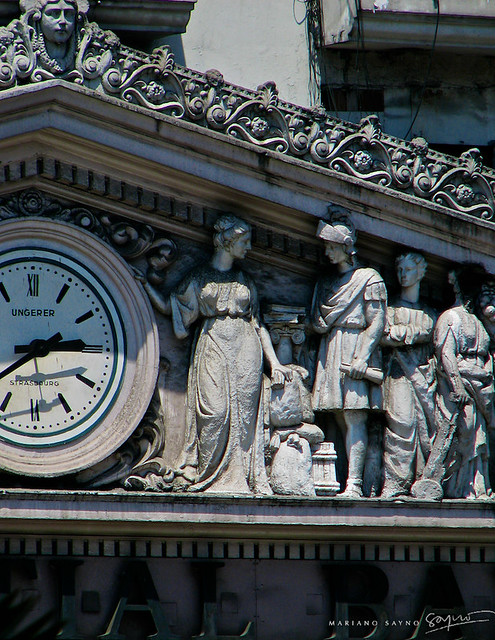 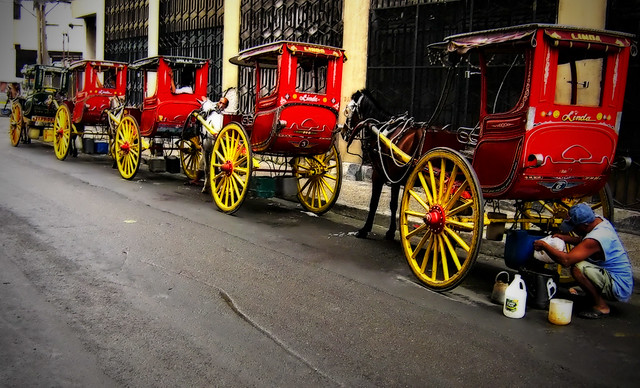 calesa terminal. Kalesa (sometimes called a karitela) is a horse-driven carriage used in the Philippines. The word predates the Spanish conquest and descends ultimately from an Old Church Slavonic word meaning "wheels." This was one of the modes of transportation introduced in the Philippines in the 18th century.  Manila Yacht Club, Roxas Boulevard across the Blvd. was our old quarters at the Manila Naval Station (MNS) |

My early recollection of the Legislative, Post office and the fortification near the Pasig River deserved some mention. Along these walls of Fort Santiago were a lot of Cogon grass that we use to clean and cut back in the mid 1950 as a civic duty and as a project for my cub scout den, designated then as Pack Number 1. During World War II, Fort Santiago was captured by the Japanese Imperial Army, and used its prisons and dungeons including the storage cells and gunpowder magazines for hundreds of prisoners who were killed near the end of the war. MY SISTER ALETA, BELOW MY TITA CORING AND BABY CECILE 
|  Philippine Military Academy, Fort del Pilar, Baguio City.
 
  |
1960: I became aware of my heritage in my junior year at UP Prep and began preparation for my appointment as a cadet of the PMA at Fort Del Pilar. This was a period in my teen years that I remember fondly, memories in my High School, of the hectic days, dashing thru the corridors catching my schedule of classes at Rizal Hall. I recall my bag loaded with books, eager, wide eyed, and quick to learn the tenets of math, the arts and sciences. I remember past friends and stormy situations that most teenagers weathered through. As in life surviving the unspoken pecking order among bigger classmates and the so called in crowd was the rule. That lone wolf streak that kept me apart, which peers seemed to see as a weakness was a measure of heritage that set me off from the current teenage precepts of the day. Later, being a late bloomer, when of age and after further studies, scholarships for a Masters in Civil Enginering at a California State U, having ever spurred curiosity, whetted my appetite for a life of adventure, of soldiering and foreign lands.
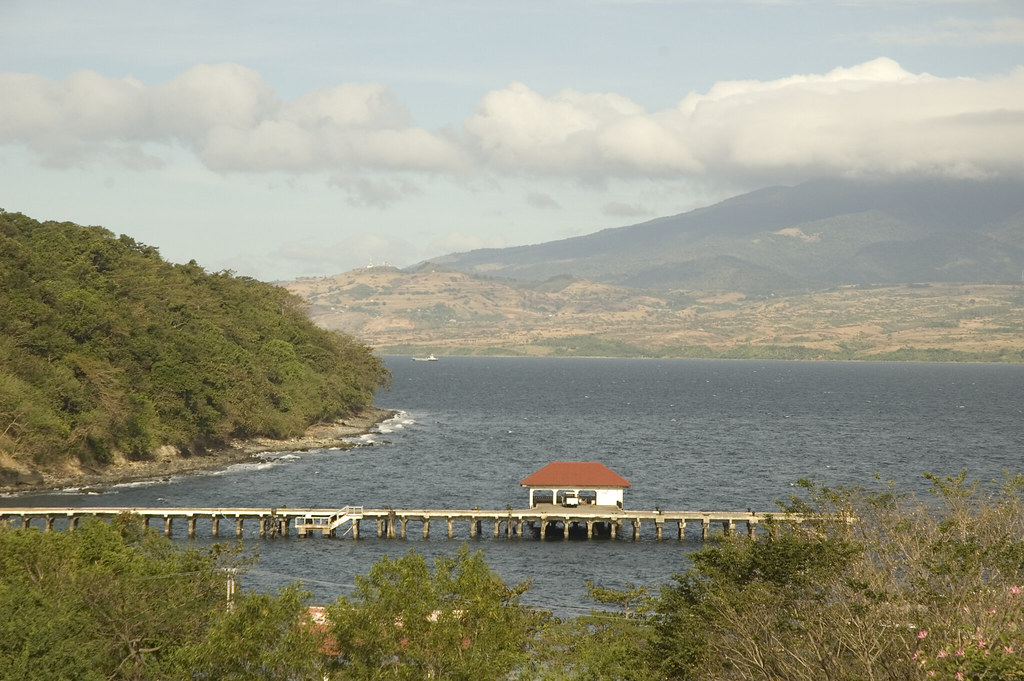 |
 Quezon Memorial Circle |  Dr. Jose Rizal MemorialPaco Park and Cemetery |  Andres Bonifacio EDSA cor. Rizal Avenue |
 Andres Bonifacio's monument in Caloocan City, Andrés Bonifacio was one of the chief leaders of the revolution of the Philippines against Spanish colonial rule. The 1896 Philippine Revolution was the first revolution in Asia against European colonial rule. | 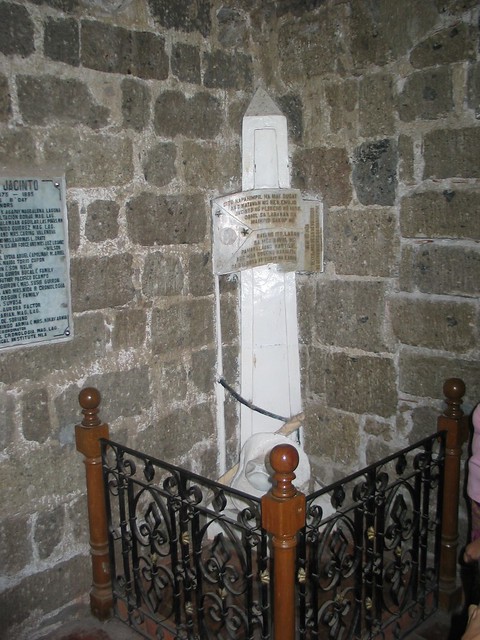 Dugo sa Magdalena. Kinalugmukan ng duguang katawan ni Emilio Jacinto sa simbahan ng Magdalena, Laguna |  Mabini monument.This is Apolinario Mabini's monument located at the plaza fronting the city hall. Mabini, tagged as the "Sublime Paralytic", is a son of Tanauan. |
 In my days we just call this place as Luneta. Manila is the site of the country's premiere park, Rizal Park, which was erected for the country's national hero, José Rizal. Besides having parks and green areas, Manila is the home to several plazas, such as the Plaza Balagtas and Plaza Miranda, the site of the1971 politics-related bombings. Within Manila lies notable parks and green areas, such as the Cultural Center of the Philippines, the Rajah Sulayman Park, Manila Boardwalk, Liwasang Bonifacio, Mehan Garden, Paco Park, Remedios Circle, the Manila Zoological and Botanical Garden, Pandacan Linear Park, and the Malacañang Garden.  National Press ClubLegaspi Urdaneta Monument right photo |   Intramuros – Manila This was the place where as a child, I watched young men in fatigues with rifles. Later in college, I would be here, ROTC drills right there at the back of San Ignacio Church ....beside Ateneo ....on the Western side of Sta Lucia |
  Phillipines Naval Special OperationsA member of the Naval Special Operations Group (NAVSOG) fires his automatic sub-machine gun during an anti-terrorism rescue operation at the Philippine Navy headquarters in Sangley Point, Cavite |
Fort San Antonio Abad in Malate, Manila, Philippines, from the south looking northwest. Fort Abad is of significant historical importance and a Philippine national treasure. It is strange that so few know about it. It is great that it survives today in good condition and is being protected. It has so much history behind it. The British invasion of Manila in 1762 took this fort first then the American invasion in 1898 did the same. It is located behind the Metropolitan Museum of Manila on Roxas Boulevard. This was the site of the old Manila Naval Station our old military quarters, across the Cultural Center of Imelda. Sangley Point Papa became CO of this base in the 1970. An O2U floatplane flies over the Cavite Navy Yard, circa 1930. The seaplane tender Jason is docked at the yard, directly below the plane. Sangley Point is in the background. 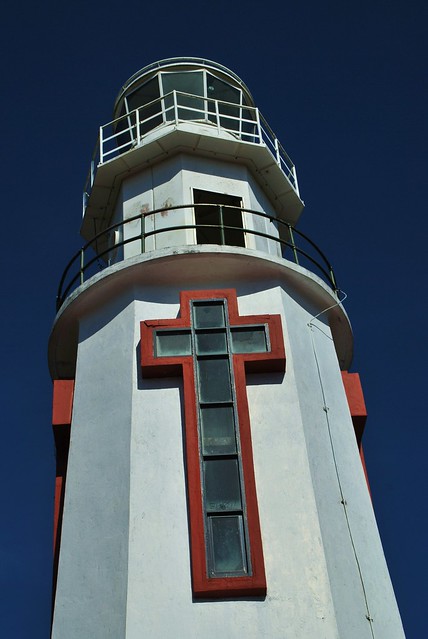 |  Going Home  A Japanese air raid on 10 December 1941 leaves the Cavite Navy Yard in flames. |
|
 Fort San Antonio Abad Malate; ManilaI remember this building pretty well. When I was a child, my mother and I would collect the salary from the cashier’s office, while my father was away on missions. Then later on, lived across Roxas Blvd. when father was the CO of the Manila Naval Station. Above is the Philippine Navy headquarter building in Metro Manila. This was also the venue of my High School graduation ball at the officer’s club in 1961.  The old Navy base inside Manila Naval Station at Dewey Blvd. adjacent to the Manila Yacht Club. The Manila Cultural Center foreground/below |
 Papa and his various duty assignments in the 60's who left our midst Feb. 2010. Early in his career as a naval officer, seldom we see him for a decade as he was out to the Southern seas in Mindanao fighting the banditry and secession movements of the muslims. He will go on to higher positions, to take command of his own ship, then a number of ships as a task force commander, then Chief of Staff of the Philippine Coast Guard, a professor in academia at the National Defense College of the Philippines, Dean at the Command and General Staff College, a base commander at the Manila Naval Station and Cavite Naval Base at Sangley Pt. But what I remember most was him on the bridge of RPS 1133, and I a pre school kid, looking at a young Lt. taking his ship out to the open seas, out of Manila Bay.  Ramparts of Fort San Antonio Abad where the old HQ of MNS was an addendum perched on top. The old building is gone but the fort remains in its original grandeur. |
 |  MANILA NAVAL STATION now Jose V. Andrada Naval Station Manila, Philippines. |
|


Aurora Blvd.-Cubao1950's-1970's Metro Manila,
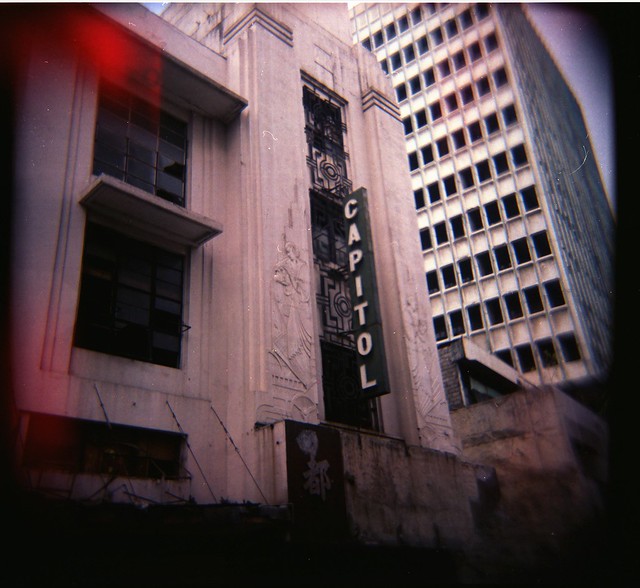
Old Capitol Movie Theater
Capitol Theatre Art Deco in Escolta, Manila. Capitol used to be one of the finest movie houses in the Philippines until the 1960s.

A smile shines thru. The Philippine Santa Cruzan celebration is held each month of May. It highlights a religious procession participated in by beautiful ladies, among them a "Reyna Elena." They depict the historic search of the Holy Cross by Queen Helena and her son Constantine the Great. Typical corner cafe and street vendor up front

Manila hemp arriving in cart loads at a Manila warehouse

Carabao cart hauling lumber the old energy efficient Filipino way, Manila

Ayuntamiento Building, Intramuros, Manila
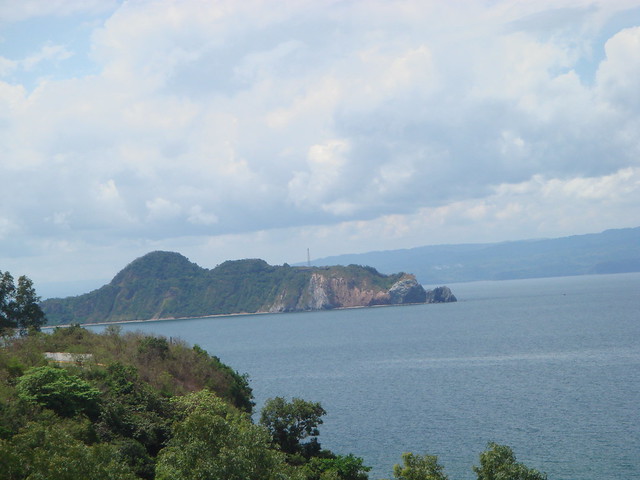


 Defense Secretary Ramon Magsaysay overseeing the capture of William Pomeroy, an American ideologist and leader of theNueva Ecija Huk Propaganda Corps. Prior to assuming the presidency, RM was Defense Secretary in Pres. Elpidio Quirino’s Cabinet.For more information on the capture of William Pomeroy![Atty. Diosdado Macapagal raises the Philippine flag at Turtle Islands.<br />The caption reads:<br /><br />Atty. Macapagal got his first break as a public figure in 1948 when Vice President Quirino, then concurrently Secretary of Foreign Affairs, appointed him as Assistant Chief of its Law Division and assigned him to negotiate the return of the administration of the Turtle Islands from the United Kingdom to the Philippines. He succeeded and [Vice President] Quirino gave him the privilege of raising the Philippine flag over the islands. <br />- From Nipa Hut to Presidential Palace by Diosdado Macapagal<br />](http://25.media.tumblr.com/tumblr_maw980UQkV1qifq8yo1_500.jpg) Atty. Diosdado Macapagal raises the Philippine flag at Turtle IslandsAtty. Macapagal got his first break as a public figure in 1948 when Vice President Quirino, then concurrently Secretary of Foreign Affairs, appointed him as Assistant Chief of its Law Division and assigned him to negotiate the return of the administration of the Turtle Islands from the United Kingdom to the Philippines. He succeeded and [Vice President] Quirino gave him the privilege of raising the Philippine flag over the islands. Ruins at Corregidor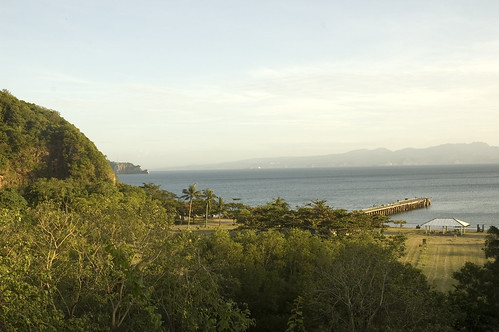 Ferry Dock |  Hospital Jabidah Grafitti. There is another story of Corregidor that is much less well known. Back in 1968, there was a slaughter of muslim Filipino soldiers training on the island by then Philippine President Ferdinand Marcos which became known as the Jabidah Massacre. To make a long story short for my American friends think of it in these terms: It's as If President Kennedy during the Bay of Pigs had killed all the Cubans he trained to invade Cuba because they changed their minds and refused to go through with it. Having a large force of disgruntled, well trained and armed revolutionaries on Corregidor, Marcos decided to have them liquidated. On 18 March 1968, all these specially trained soldiers meant to invade the Malaysian island of Sabah were murdered at Kindley Airfield. As the story is told from the Corregidor guide, these soldiers that were killed apparently wrote their names on the walls of the hospital in the days preceding their deaths.I missed this early morning and late afternoon call to the colors at (MNS), this bugle call melody is used to accompany the raising of the Flag (the national colors). It's used when no band is available to render honors. "When it's played on military bases, all uniformed personnel are required to come to attention and present a salute, either to the flag, or in the direction of the music if the flag is not visible" |

Corregidor on the horizon. Between December 24, 1941 and February 19, 1942, Corregidor became the temporary location for the Government of the Philippines. On December 30, 1941, outside the Malinta Tunnel, Manuel L. Quezon and Sergio Osmeña were inaugurated respectively as President and Vice-President of the Philippines Commonwealth for a second term.
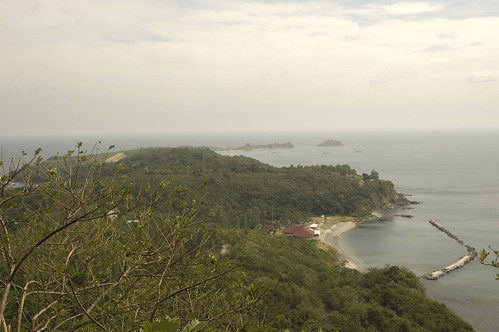
The Tail of Corregidor Island with Hooker's Point at the farthest end
 Church at the Campo Santo de La Loma. Today it is All Saints' Day. Filipinos observe this day by visiting their dead relatives in cemeteries and memorial parks and columbariums, go to church and light candles in commemoration of this dayIn late December 1941, following the failure of MacArthur's gamble to hold the Japanese invaders at the beaches, the fate of the Philippines seemed sealed. As the Japanese successfully stormed the shores of Lingayen Gulf and Lamon Bay, splitting Luzon, the largest island in the Philippines, in half, MacArthur had no other alternative but to order his troops to withdraw to the Bataan peninsula, where he planned to make a last stand and at the same time he ded to abandon all efforts to defend Manila declared it an open city, to save the capital from destruction and to minimise civilian casualties. Father in the mountains of Vancover Canada with Lt. Munoz and Lcdr. Cabal, I also remember him on the bridge of RPS 1133, like the ship on the right. I was a pre school kid then, looking at a young Lt. taking his ship out to the open seas, out of Manila Bay. 1960: I became aware of my heritage in my junior year at UP Prep and began preparation for my appointment as a cadet at the PMA at Fort Del Pilar. This was a period in my teen years that I remember fondly, memories in my High School, of the hectic days, dashing thru the corridors catching my schedule of classes at Rizal Hall. I recall my bag loaded with books, eager, wide eyed, and quick to learn the tenets of math, the arts and sciences. I remember past friends and stormy situations that most teenagers weathered through. As in life surviving the unspoken pecking order among bigger classmates and the so called in crowd was the rule. That lone wolf streak that kept me apart, which peers seemed to see as a weakness was a measure of heritage that set me off from the current teenage precepts of the day. Classmates underestimated me a poor kid, just a son of a sailor, short in stature and have not reached the growth expected of my age. My inner strength was formed this way. My full attention was now focused to strive, improve myself and the planned transfer of the whole family to the USA by advanced education. Later in full bloom, when of age and after further studies and scholarships, having ever spurred curiosity, whetted my appetite for a life of adventure, of soldiering and foreign lands.  La Loma Cemetery, memorable for its vegetation and semi rural setting that attracts the youth for adventure specially at twilight and even at pitch dark on a moonless night. Every year in the last week of October, Filipinos take a Roman Catholic inspired holiday to remember the dead. Cemeteries all over the country come alive during these days, as relatives of the dead spruce up the graves of their ancestors. |
Japanese Sentry Tower - Camp O'Donnell, Capas, Tarlac  Camp O'Donnel (Capas Tarlac). the American sector of the war memorial.  Bataan Death March Box CarIn San Fernando the POW’s where loaded on the trains bound for Capas, Tarlac, The Boxcars normally carried 50 persons, but the Japanese packed them up 100 to 115 Prisoners. At each stop, The Boxcars were open to give the Prisoners fresh Air. The POW’s got off the train at Capas and marched the final kilometer to Camp O” Donnell. |  Libingan ng mga bayani. Fort Bonifacio. |
Although La Loma was not a haunted Cemetery, to my belief, there was a time I got stranded after an afternoon play with a classmate. It became a different setting when darkness fell, I felt so alone and just walked fast to get away from the surrounding concrete fence of La Loma. I have been there in 1953 to 1957 and many stories of the ghost of recent burials and internments were circulating around. The image of a young Japanese artillery officer with a close beard haunted the outside graves. Walking in short pants with his samurai sword slung at his side wearing his soldier’s tunic, or seen sitting alone smoking. The description is aptly backed, by the presence of canons, field pieces in the cemetery. He just walks up to visitors and usually asks for a light. Many startled mourners say he will attend a funeral and walk up at the end of services tap you on the shoulder ask for a light. Simply it has been said that, you turn and he's not there. 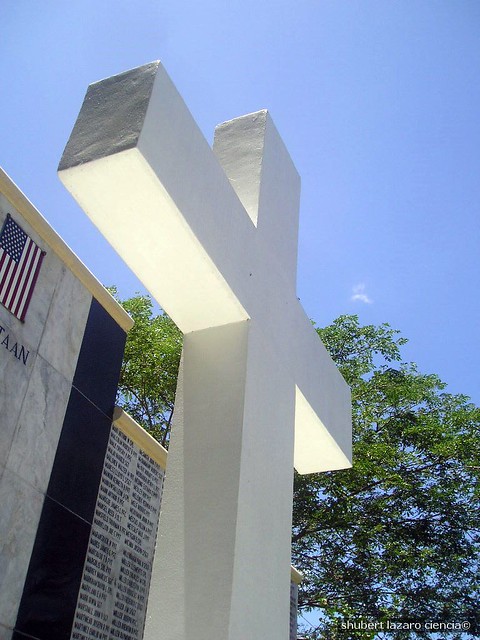 Camp O'Donnel (Capas Tarlac). the American sector of the war memorial.The Cement Cross In wishing to honor our comrades who died so far away from home the battling bastards of Bataan Death March commissioned the construction of this Replica of the “Cement Cross” in the hope that all those who may pass by to view this memorial will remember the many young Americans who gave their lives in defense of their country and of the Philippines. In June of 1942 the Japanese authorities at the American side of the Prisoner of war enclosure at Camp O” Donnell, two kilometers north of this site presented the prisoners with some Cement. The American Prisoners decided to build a Cement Cross to honor the memory of their dead comrades. Completed later that month. The cross remained hidden amidst tall grass until was discovered by returning American Forces in 1945. Left where it originally stood unknown to most and battered by the elements. The cross was again forgotten. Rediscovered by Bataan Veterans visiting the area in 1961. The cross became the historical symbol of the American Prisoner of war enclosure and its dead. When American military presence ended in the Philippines in 1992. The cross was brought to the National Historic Site Andersonville, Georgia, USA. Where it is now kept and displayed. This Replica stand as a reminder of America’s unprepared ness before the outbreak of World War II. |  Libingan ng mga BAYANICoast Guard At Port Area Manila left photo, La loma Cemetery next above, Libingan ng mga Bayani (heroes cemetery) Fort Bonifacio close to where we live at the Navy Village, Fort William McKinley then (Fort Bonifacio) It was the final stage of the tragic death march and a concentration camp with an open field which served as the dumping grave site of Filipino and American soldiers who died with debilitating diseases. It has witnessed the endless sufferings of the sick and the neglected only to die, then dropped in mass with three and half feet depth and those who survived the darkest moments of their lives, they narrated with tears clouding their eyes, the traumatic experiences encountered during their detention, as they gasped with depression and sadness and said CAMP O” Donnell, that was. |
 Coast Guard Cutter in the Port Area, similar to ships we used to patrol offs  Remnants of Daniel Burnham's stamp in Manila - the old Dewey Blvd. - now Roxas Blvd. Driving through the boulevard feels like driving through Chicago's Lake Shore Drive ... This picture of the boulevard feels like it was taken from a highrise on Chicago's Lake Shore Drive near Goethe and Inner Drive. The US Embassy is situated along this boulevard around the area of the lights jutting into the bay.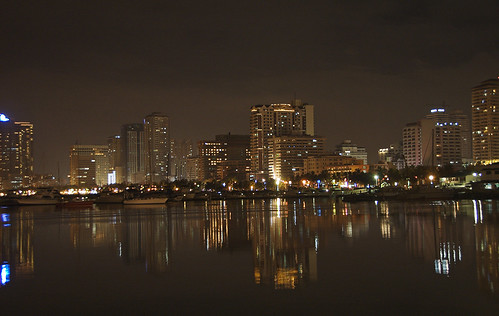 Remnants of Daniel Burnham's stamp in Manila - the old Dewey Blvd. - now Roxas Blvd. Driving through the boulevard feels like driving through Chicago's Lake Shore Drive ... Actually Burnham designed plans for Manila (1905) before he designed Chicago (1909). Parts of the design, based on the City Beautiful movement were implemented - like this boulevard along Manila Bay. He also designed Baguio City, the summer capital of the Philippines, situated up in the mountains of Northern Philippines.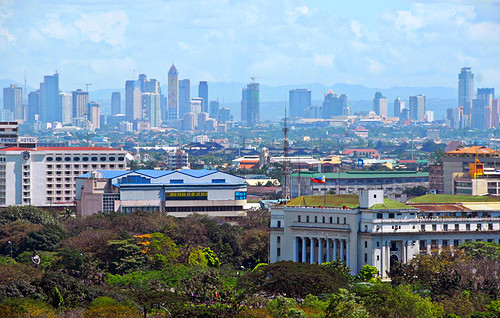 |    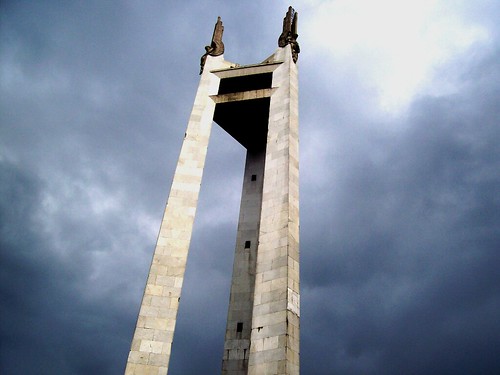 |
 Espirito Santo Church 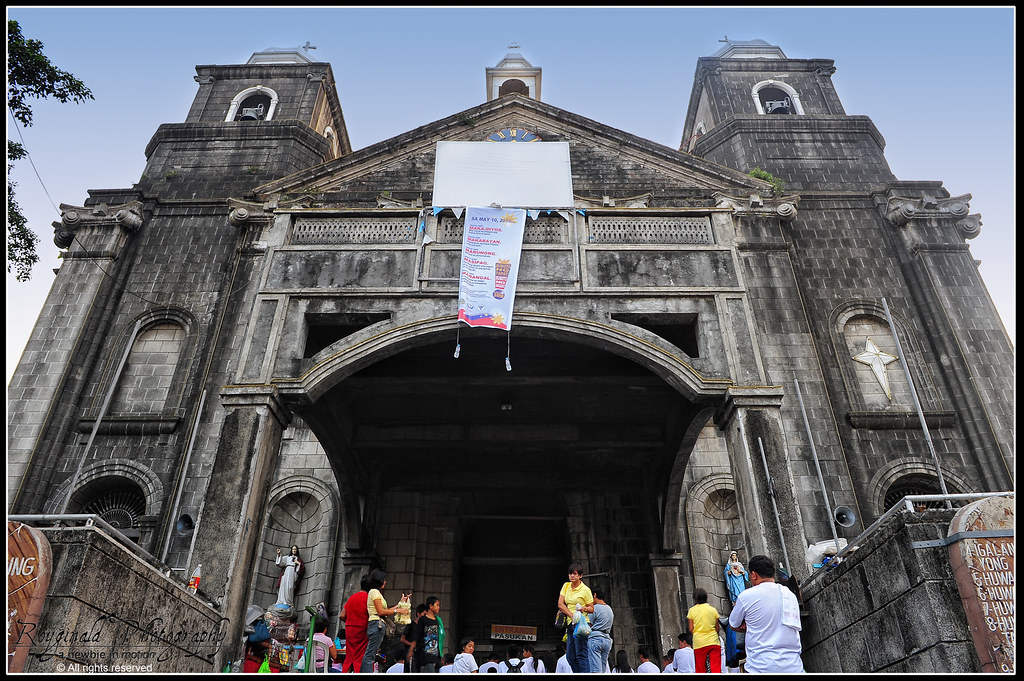 |  The place where the parish church of Espiritu Santo stands now was an old cemetery, officially closed by the Sanitary authorities already in 1913 due to the growing population in the vicinity. (There was a tree that served as an improvised belfry; on its branch hanged a bell. The two young seminarians studying at CTS, Juan Tugadi and Tomas Pacano, used to climb it to ring the bell. The two later became SVD priests.) In January 1926, Archbishop Michael O.Doherty of Manila blessed the place where a church dedicated to the Holy Spirit was soon to rise. His Excellency gave a substantial donation for the construction of the church in the amount of P20,000.00. In 1928 our SVD missionaries started the construction of a church building. When Fr. William Finnemann was consecrated Auxiliary Bishop of Manila in 1929, Fr. Philip Beck took over as parish priest in December of 1931 - to him fell the burden of continuing the construction of the church. A crypt which contained 444 niches was built underneath the altar. The niches were sold to local residents and the proceeds used for the completion of the church. After much sacrifice and support from generous benefactors, parishioners and friends, the church was finally finished. It was blessed on the occasion of the parish fiesta on May 14, 1932 by Bishop William Finnemann himself - the first parish priest of Espiritu Santo Church. |
 February 9, 1946, the Capuchins obtained the official authorization from the government to restore the church of Lourdes in Intramuros. An official letter indicating the approval of the church and its condition, a plan of the church building was approved and signed on February 17, 1946. However, the Capuchins decided to build a beautiful and wide church in Quezon City, Retiro St. because Intramuros was a deserted place, abandoned by people and nobody’s land. The property of Intramuros where the Church of Lourdes and the Central House was sold to support the building of the new church at Quezon City. Feast Day of Our Lady of Lourdes 1946 (Sta. Teresita Parish) |

 Altar at Our Lady of Lourdes retiro , Q.COne cannot mention the devotion to Our Lady of Lourdes in the Philippines without citing the people behind the devotion. It was a layman Don Regino Garcia who ordered the Filipino sculptor Manuel Flores to make a statue of Our Lady of Lourdes, which was placed at the side altar of the church of the Capuchins in 1892.March of the same year, the capuchins with the help of Fr. Mc Carthy, an Augustinian priest, brought the image of Lourdes to the University of Santo Tomas. During Palm Sunday of the same year, the image of saints are covered with veils by the Dominicans including the image of Lourdes and handed it over to the Capuchins and carried it to the chapel of Santa Teresita for the celebration of Flores de Mayo. | 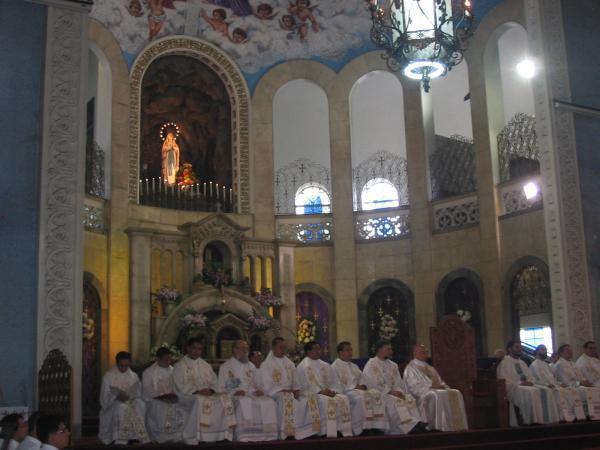 It was during the Novena at Our Lady of Lourdes when the Japanese ordered all residents of Intramuros to go out of their houses and gather together at the four (4) main places of Intramuros: the Hollywood Theater, the San Agustin Church, the San Francisco Church and the Cathedral. Our Virgin of Lourdes and all the most necessary things were transferred from to altar to the receiving room of the convent of San Agustin Church. On February 11, the Feast of the Virgin of Lourdes, the capuchins and devotees appealed to the Japanese for permission to say 3 masses in the sacristy. The permit was granted, allowing 3 Superiors celebrating 3 masses for the feast: Franciscans, Augustinians and the Capuchins. How was the image of Lourdes was saved during the war? Many people especially the devotees of Lourdes cried out to the capuchins to see the beautiful Virgin of Lourdes wondering how it was saved. According to history, when the capuchin brothers abandoned the church of Lourdes, Intramuros and the central house, they carried with them the image of Lourdes. Some days later, the Capuchin Custos, ,Fr. Florencio of Lezaun, gathered all religious articles: chalices, ciboriums, monstrances, relics and the treasure of the Virgin of Lourdes: crowns, rosaries and jewels. All together they put in iron box at the bank of D. Raimundo Salonga in Binondo. For the refuge of the Capuchin brothers, they were ordered by their superior to go to San Agustin and placed the images of Lourdes in the wide sacristy of the church. They continued on the daily novena exercises together with the religious of other orders and devotees including Doña Martina Azucena who was miraculously cured in 1896 before the image of Our Lady of Lourdes. On February 23 of the same year, the image of Lourdes was abandoned in the sacristy of St. Augustine. Men young and old and the religious were horribly massacred by the Japanese sometime between January 5-19. Around 3500 women and children and all other refugees of St. Augustine were ordered to abandon the building. | 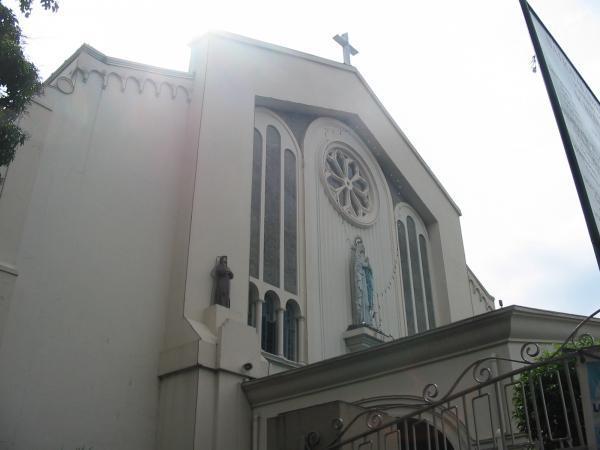 Lourdes Church FacadeOL of Lourdes Fiesta 2010, OL of Lourdes Shrine, Amoranto Ave., Q.C., Philippines Portal to Old San Lazaro Hospital RuinsShrine of St. Lazarus, Avenida Rizal cor. Tayuman, Manila, Philippines |
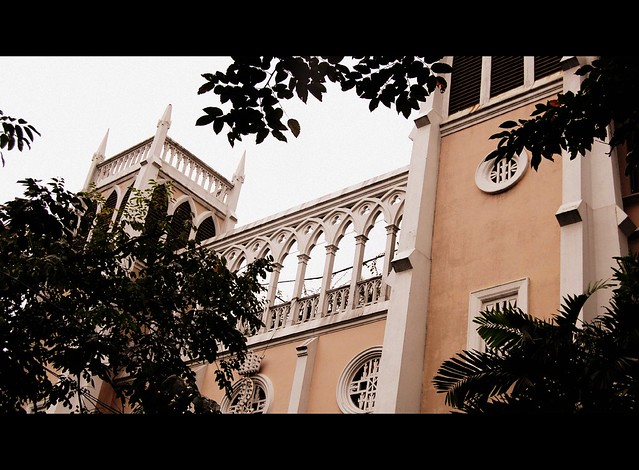 San Beda Church (Manila) A Swedish architect, George Asp, designed the church that was completed in 1925. Fr. Peter Celestine Gusi (OSB) later added the side chapels and galleries between 1947 and 1958 |  San Beda Church (Manila)The church is reknowned for its paintings that were done by Fr. Lesmes Lopez (OSB) and Bro. Salvador Alberich (OSB) from 1930 until 1939.Right Photo San Beda Church (Manila) A closer view of the main altar. | 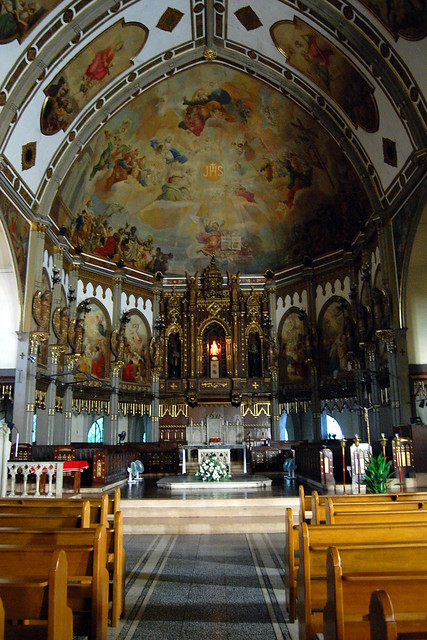 |
 Old San Lazaro Hospital Ruins. Shrine of St. Lazarus, Avenida Rizal cor. Tayuman, Manila.The Manila Jai Alai Building was a building designed by American architect Welton Becket that functioned as a building for which jai alai games were held.[1] It was built in the Streamline Moderne style in 1940 and survived the Battle of Manila. It was considered one of finest Art Deco buildings in Asia. It was demolished on 2000 upon the orders of the Mayor of Manila Lito Atienza amidst protests, to make way for the Manila Hall of Justice, which was never built | Summer of 1950 sparked the beginning of the Korean War. As a police action the United Nations sent 16 member nations to uphold peace and democracy in South Korea. One of these countries was the Philippines who arrived in September of 1950. Very little is known about the Philippines' participation in the Korean War, let alone the soldiers who fought for democracy. These are their memories, the memories of the Forgotten. Jai Alai structure on Taft Avenue, photo at the right and below. |  |
 Old San Lazaro Hospital Ruins Shrine of St. Lazarus, AvenidaRizal cor. Tayuman, Manila |  |
 |
|
 Regina Building. This building is one of the few American Era buildings that remained along Calle Escolta. Regina bldg. right photo. |
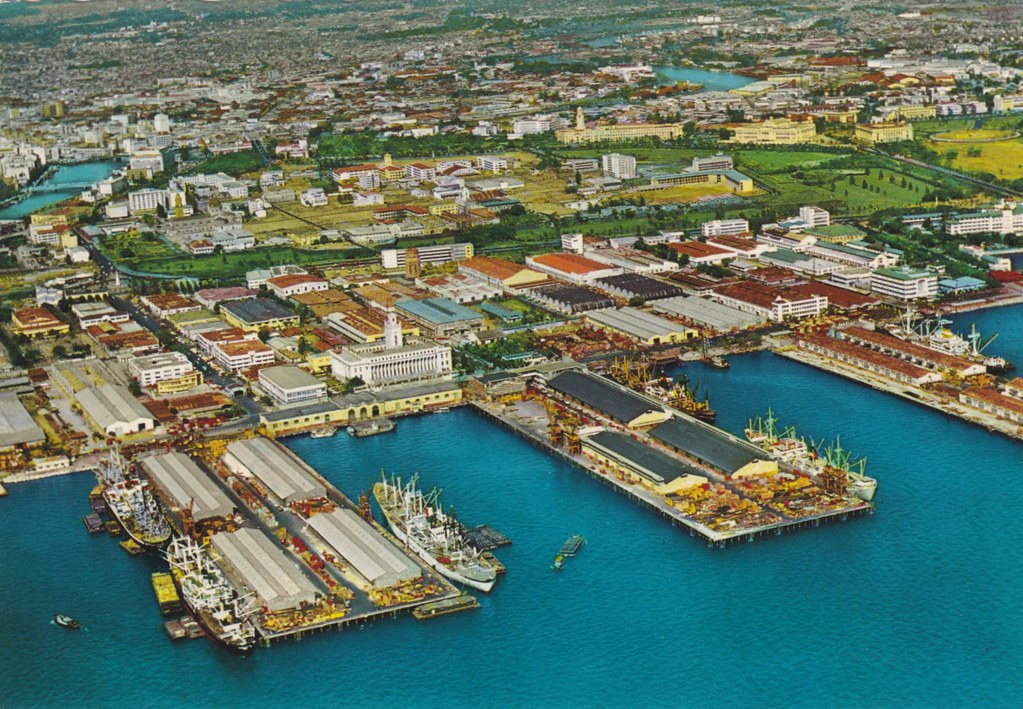 Manila Harbor, and Intramuros, Philippines, late 1950s or early 1960s. Notice that this photo was taken before much rebuilding in Intramuros and there is lots of empty land showing just how much of the city was cleared after WWII. Papa as a young Ensign on training attached to the US Navy |
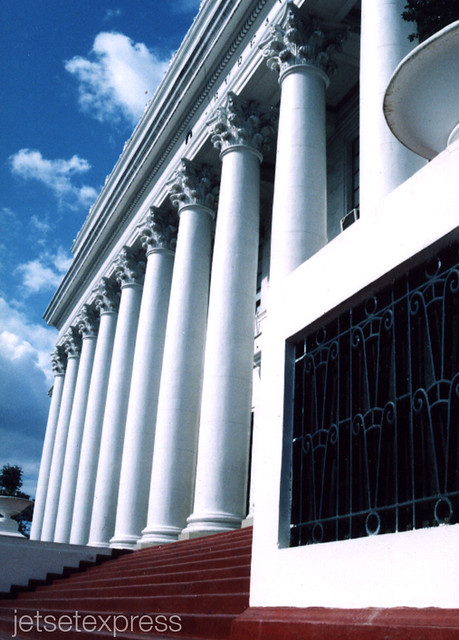 Customs Building, Port Area, Manila Port Area Manila |  Eisenhower visit. I was there observing the motorcade as a sophomore at U.P. Prep. Luneta below. This was the Luneta I remember ... I was in my 2nd year High School at the University when "Ike" visited the Philippines. ... of course Ike used to live here before the 2nd WW when Philippines was a Commonwealth of the United States and was aid to the Field Marshal ...now President of the USA. 

|
|
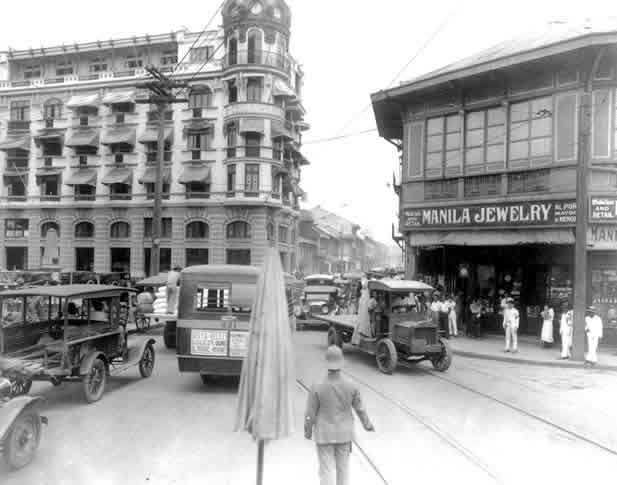 CHINA TOWN
CHINA TOWNAT LIPA LAGUNA ANCIENT DISCOVERIES (709,000 years old) ON OUR WAY TO LOS BANOS
Sept. 1966: The Brothers Alpha Phi Omega (APO) Fraternity of the Delta Chapter Philippines circa 1966, from L# 1 Renato Perez, L #2 Virgilio Macalinao, L#3 - kneeling, me Alexander Custodio, 4-kneeling, Warlito Boquiren ChE66, L#5 Johnny Lee, ?,L#7 Roberto Sobrepena, L#8 hidden halfway Camilo Assuncion Standing on the far left Derige (the brother of Rosalina Corbet, Mario Templado, Rolly Calumpong, Joe Calvo, Cesar Frias, Jojie Catibog, ?, Advisor Prof. Sevilla and daughter, Bonni Tong, Alex Tiquia, Jonah Molina. More than 350,000 members have joined Alpha Phi Omega National Service Fraternity since it's founding, at 366 college campuses here in the US alone, not counting other countries. Our mission is to prepare campus and community leaders through service. Our purpose is to develop leadership, to promote friendship and to provide service to humanity....... ASC 45 years later, Feb 19, 2011: After the years of absence from the Alpha Phi Omega fraternity, I rejoined the fold and found the warmth of friendship. Getting reacquainted with old friends and meeting new brothers. I am in my advance years, but my youth came back amongst the Brods, which is invigorating. I am very much in good company when I say ahh youth, as the older Brods Tito Cerdan at age 84 can still hang around with us, Rey Cacabelos, and Cesar Frias, who are from earlier batches, can feel the same thing in their hearts, as emotions betray them. I intend to make a separate blog entirely for APO, ie. like my Sixties, and then place all the pictures of our Valentine excursion from Stockton, California. Rejoiced, as it was a sweet reunion too, of my long lost best buddy Brod Cesar who was also a neighbor a classmate at MIT a twin brother in our escapades on dates and trips to Tanay. We have not seen each other for 45 years. We just have to makeup for the lost years, ie. the same with Brods Rey Cacabelos, Fortune Cumigad, Jonah Molina. We give our sincere appreciation to the family of Brod Jonah and Rose for the warm, kind accommodations and specially to Marjoe and Jo Ann for the warm beds rendered. The food was excellent. You guys missed the "alimango" when Mel Gonzales of ETA chapter came in after lunch. I hope to see you again in the near future, as the warm and cordial mood pervading the celebrants and guests was uplifting to the spirit. The only thing I wish, was to remember all the names of the Brods present during the gathering like Jojo Lobusta, Jun Malan, Tony Santilan, Larry of Gamma, Oliver our youngest, Trigo from Dist7, Betcha Dist4, (Caltrans designation for areas in California of which I was in HQ Sacramento and Dist. 4 San Francisco during the 60’s /my youth) Reigel my neighbor from the Bay Area, Ferdie who was an inspirational MC, Joel Pablo, who was kind enough to share his prize, Oca Atienza a long lost acquaintance from my MIT years. Forgive my senior mind in the advent of forgetfulness, if I was not able to mention the rest of the Brods. To those who did not make it, it was a fine dignified affair at the Hilton, that continued on toward the wee hours of the AM at Brod Jonah’s place to the consternation of the neighbors. I think some of the Brods continued their celebration outside, and got shooed away by some friendly but sleepy neighbors. With all the talk, laughter, and joyous celebration, I can not wait for the next one. Till we meet again….ASC
Hi Brod El Prez Jonah Molina, the other officers of the APO Delta Chapter Overseas Alumni Association, , Committee members of the different committees and all those who in one way or another were involved in the preparation and in organizing an enjoyable and memorable valentine's day celebration, CONGRATULATIONS. Just so sad that the fun and merry making and the last miniute meeting had to be cut short by house rules and the meeting had to be continued in Brod El Prez Jonah's place. That was indeed an affair to remember and I am so glad and happy that I did not miss this wonderful occasion. The atmosphere that pervaded was so cordial that one could feel the happiness and the close comeraderie of all the attendees. The program was short but was full of fun and enjoyment and the music so enticing that even the elderly could not help but join in the fun.. Sister Betcha and the other lady sister really did a wonderful job prepaing the venue and the parlor games, bursting the balloon, blowing the balloon, the raffle, etc. were all but terriffic. Thank you all , for inviting me to this occasion. I am so happy that God has granted my prayers to give me strength to be able to endure the rigors of the gathering so I could renew acquaintances wih kabrods that I met in 2009, during my first time ever to attend a gathering of Apo Deltans since I was initiated to the Fraternity in 1952. I am afraid that Mr. Alzeimer is fast approaching on me that I may not be able to remember all of those whom I met in 2009. .It was also an opportune time to meet new ones. I could not help but remember with heartfelt gratitude and thanks that it was Brod Joel Pablo who woke me up from my deep slumber as a Deltan. It was Brod Joel who introduced me to the APO Delta Chapter Alumni Association USA and Canada.Valentine's Day celebration in Sacramento CA., in 2009. This was my first time ever to attend a gathering of APO Deltans since 1952. Thanks to Brod Jun Malan, who together with hiis wife Vangie, fetched me from San Jose, so I could attend the celebration. Also my thanks to Brod Tony and his Wife Anne, for the nice Jacket and cozy accomodation then. Thanks to Brod Ben Gacusan for taking me back home to San Jose. Brods Ben Gacusan, Sam Pitman, Enting Ellescas, who are all in the Philippines right now and were not able to join the fun, (I missed you guys), and Brod Ferdie del Rosario, dropped by my place in San Jose on their way to the reunion in September 2009, to find out if I can join them to the reunion. Much as I wanted very much to do so, my health condition at the time did not warrant my joining them.By the way, Brod Ferdie, together with wife Betcha were not only great MCs but were also a very cordial hosts. With them around one can always be at ease. I would like to acknowledge with gratitude the kind help of Brod Jojo Lobusta, whom I met only two weeks ago but had become so intimate, that we are now like friends of long ago. It was Brother Jojo, who picked me up and brought me back to San Jose and he was also my tutor in the new APO hand shake and whistle. These new tricks came in handy during the sumptous brunch gatherng at Brod Jonah and Sis Rose place.. IIt was amusing to see kabrods , the young ones, looking amazed upon hearing a whistle imanating from , the young once, an old guard of the 52s. Thanks to the proddings of my Tutor Brod Jojo. we almost slightly put the house down. It was during this time that I did have the pleasure to exchange short pleasantries with Brod Fortune Cumigad and Brod Bong Hernandez. I hope we will have a longer chit .chat next time .around. Upon arrival at Brod Johna's place,. where we were received so warmly that I felt instantly at ease, we introduced ourselves to all the Brods and Sis who were already there, I had the pleasure of meeting for the first time, ka brods who like me may likely be called "The Young Once". There was Brod Alex Custodio, who said he had been in the USA for the past 45 years without having gone back to the Philippines since then. Brod Alex was to become our room mate with Brod Jojo for the night so early morning re of the next day we did have a brief but interesting exchange of views. Brod Jonah, Sis Rose, Jomar and Jo Anne thank you so much for the cozy and wonderful accomodation. IIt was a pleasure to meet Brod Cesar Frias and his wife Cora, who, If only to emphasize the need for unity and closer comeraderie in the group,,drove all the way from Windsor, Canada to Stockton, USA, a distance of only more than three thousand miles, just to attend the Valentine's Day celebration.. Thus he said, he also proved to his darling wifey Cora that he can still drive to another gathering like this in the near future. 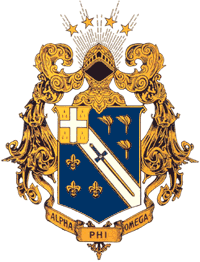 Brother Norie Cacabelos , whom I had the pleasure of meeting in 2009, although now maybe considered as one of the "Young Once", did compete with the "Young Ones",led by Brod Reigel and wife Mindy, in the dance floort giving the impression to all and sundry that "Hindi pa kami Laos". Though only for a brief chat I was so happy to learn from Sis Linda that your health condition has greatly improved. Carry on Brod, just do it. Am so sorry Brod Norie if my attendance deprived you and the other "Young Once" Brods the Calling as the "Most Senior" among the attendees. I did so again in 2009 when I did deprive Brod Ben Gacusan of the Calling. Pero huag kayong mainip mga Brod. You will have your time.. It was a pleasure to meet Brod Wilson Lauchang who was always there ready to assist in many ways. Brod Wilson, Jo Anne, and Brod Jojo thank you so much for taking pictures for me, Then there was Brod Larry, who dropped by and whom I had a very pleasant chit chat. I was happy to meet and talk to his wife Elsa? in the Bolinao dialect which is an adulterated Zambal dialect, her native tongue.. Sitted at our Table No 4, were myself, Brod Joel "Abu Bakar" Pablo,, Brod and Mrs Trigo Leyva, Brod Anthony Ty,his wife Fe and daughter Karissa, and Brod Oca Atiensa. The encounters of Brod Trigo as a Coast Guard which he and Brod Joel presented as a comedy skit was very amusing.and very impressive. The affair was indeed a success and once again congratulations to the Officers of the Association headed by Brod El Prez Jonah Molina and the Committees who were responsible in making the affair a resounding success. …Brod Tito Cerdan |
Brod Alex, I'm glad you enjoyed our gathering and we look forward to seeing you again. I myself had a good time mingling with brothers and sisters from Batch 1952 (Tito Cerdan) to Batch 2000 (Oliver Vergara) and those in between. It was nice to see Brod Saniel Cuison (Batch 1980) play the guitar (ala Neal Schon of Journey) and made us dance all night long. It was fun seeing the 60's brods participate in a baloon game to see who could "blow" the biggest balloon! It was nice to see Brod Cesar Frias and wife Cora, who drove over 3,000 miles from Windsor Canada and bravely climbed over the snowy Sierra mountains, experienced using tire chains, and had a flat tire on his way to Stockton, to endure all of these and still inspire us with his Unity speech. It was especially nice to see Brod Norie and wife Linda lead the line dance and made us look like amateurs. It was nice to see everyone enjoyed each other company and drank the wine (all 12 bottles) and beers - as Brod Tito Cerdan call it "agua de pataranta". It was nice to hear my batchmate, our comedian Brod Joel na "nataranta" as Abubakar and surprisingly a junior Abubakar is emerging - Brod Trigo who gave us an insight of the funny side of being a soldier in Iraq. A brave soldier indeed he is and an emerging Abubakar. It was nice to hear President Jonah speak about our fraternity and how it has shaped our lives from our college days to now. Lastly, it was nice to see everyone helped out to make the event a success. Oh what a night!!! In LFS, Brod Ferdie Hereunder are the links to the various video clips/pictures of our Valentines party at the Hilton Hotel in Stockton. Emceed by Brod Ferdie del Rosario (Batch '75C) and wife Sis Betcha (Batch '77), the 2011 Valentines Party was a complete success. From the favors and centerpieces made by Sis Betcha, to the room set-up prepped by Anne Santillan, Mindy Abueg, and Minda Abalos, set a very meaningful Valentines ambiance. The slide show, put together by Brod Wilson Lautchang (Batch '72), made us reminisce the past Valentine affairs. We were honored by the presence of Brod Tito Cerdan (1952- Charter Member), and Brod Oliver Vergara, (Batch '2000C), the oldest and youngest attendees. Brod Jojo Lobusta (Batch '88A), who took charge fetching Brod Tito, felt a great relief on learning that Brod Oliver will be attending because he will not be considered the most junior in the group and thus avoid being the"utusan". Brod Cesar Frias (Batch '62-eta) and wife Cora of Windsor, Canada travelled by car for three days and two nights just to attend the party. "No regrets" they said, because 'the party was well worth their long travel'. Brod Fortune Cumigad (Batch '64), also travelled alone continuously for 6 1/2 hours to join us. Brod Alex Custodio (Batch '64), after 45 years of hibernation, for the first time joined us in the gathering. Brod Anthony Ty (Batch '82B) and wife Fe came with their beautiful daughter Karissa. Some brods, in their eagerness to arrive early forgot to bring their party suits and had to go to the mall to buy themselves one. Brods Bong Hernandez (Batch '75C), Wilson Lautchang, Joel "Abu Bakar" Pablo (Batch '75C), and Oca Atienza (Batch 64-eta) came one day earlier and played golf in the early morning of Saturday. Brod Oca Atienza, despite his gout insisted on playing. Right after they finished the 18th hole they joined other brods to a luncheon party hosted by a brod Mel Gonzales of Eta. Brod Norie Cacabelos (Batch '61-beta) and wife Linda and the rest of the attendees enjoyed dancing to the continuous live music from the band of Brod Saniel Cuison (Batch '80B). Songs from the old sixties to the new raps filled the dance floor air. The party was not complete without the energy and laughter-filled parlor games planned and conducted by Sis Betcha del Rosario, Brod Rigel Abueg (Batch '77B) and his wife, Mindy. The Iraq experience of Brod Trigo Leyva (Batch '77B) was transformed into a hilarious skit by Brod Joel that brought the house down. Through the untiring efforts of Brod Tony Santillan (Batch '69A), Brod Jun Malan (Batch '70), and Brod Joel Pablo, we were able to come up with a Souvenir Program which will serve as our reminder that the Valentines affair is one event that brings closer camaraderie among us.
Lunchtime, Saturday and Brother Mel Gonzales Eta ’77 invited the Delta Brothers at Jonah’s place. However, after Brother Mel had saidthe grace for lunch, I had to accompany Brother Jonah to go back at his place who got a call from Jun Malan and wife Vangie. All we can think of was the sumptuous feast the Brothers were having at Mel’s while Bro. Jonah was driving on an empty stomach and I just had six roasted peanuts on the shell. I was imagining the crunchy piece of “chicaron with meat” at Brother Mel’s table when all of a sudden, I noticed that Bro. Jonah was entering the opposite ramp of the freeway – I told him ”Look out bro, the white arrow is pointing in our direction!” Perhaps it was the existing hunger or an Alzheimer’s moment that got into him. Thank God, I was able to notice it and there was no vehicle exiting the freeway or we’d be spending the Valentine Affair at the hospital. After two more unsafe lane changes accompanied with two loud honks from irate drivers, we arrived alive at Jonah’s place. What luck it was, Jun Malan told us that he forgot his suit and coat for the party thus, we have to go out again and accompany him at the mall to get one. Actually, it was a blessing in disguise - Jonah remembered that he haven’t picked up his pants in the cleaner as well. Going back at Jonah’s place, we found Brother Alex Custodio - Delta ’64 and Brother Fortune’s batchmate, Brother Jojo Lobusta ’88 who picked up Brother Tito Cerdan, Charter’52. After my lunch of pear and a packet of Sky Flakes (lost my appetite), I asked Jonah that I need to go to the hotel and get dressed. On the driveway, we saw Brother Tony Santillan who just arrived and wearing a frown – the reason why? Well, he was also missing his pants and what happened next was Jonah had to take Tony with us, drove him to the mall and pick him up after dropping me at the hotel. Hey, we found a new talent during the program – Trigo “Trigger” Leyva and yours truly, Abu Bakar! Brother Ferdie, the MC called me up for my Abu Bakar jokes during the course of the program as usual but, I wasn’t really prepared. Remembering Brother Trigo telling us his funny experiences during his training and post Iraq days the night before, I just decided to call him up on the stage and interviewed him as one of our “unsung heroes.” The whole antic turned out as a comedy act that made the Brothers and guests in the audience roared with laughter. FYI, Brother Trigo is a reserved Coast Guard and a member of the elite Delta force (like you, I am also wondering how it happened J!). One of the funniest moments came right after the party when everyone decided to go back at Brother Jonah’s place for a nightcap. Brother Oca Atienza Eta’64 – upon seeing everyone’s condition (wasted as ever), had volunteered to drive for us, a senior doing a service to the younger Brothers, thank you, Brother Oca! After staying there until 4:00 am, Brothers Rigel, Bong Anthony Ty, and yours truly went back to the hotel. Bong was surprised to find out that because he was all wasted, he wrongfully put on the wrong pair of shoes – no shoelaces. And mind you, he was ever so careful on not to step on the laces while treading the wet sidewalk! Brother Wilson couldn’t go back to sleep anymore because he was dying of laughter. Wilson suggested that he just took it with him and send it back later since we were in a hurry, but Bong said that it was an expensive pair making it mandatory to return to Brother Jonah’s place. It was Brother Alex Custodio’s shoes that Bong wore by mistake. Finally, it was time for us to depart. Tight handshakes and hugs were exchanged. Brother Oca couldn’t help getting misty eyed, he has to wear his Ray Bans to hide it. Sadness and happiness both can be seen on each other’s faces as we bade goodbye to the brothers at Jonah’s place. I can’t forget the tight hug that Brother Tito made – reluctantly letting you go, his eyes reddened with tears. Thanks so much to Brother Jojo Lobusta for teaching Brother Tito the “APO whistle”. It was fun watching Brother Tito sound that whistle with a nod and a wink! I miss you all my dear brothers. Brothers Cesar Frias, Alex Custodio, and Oliver Vergara, I am really honored to meet you all and I hope to see you again and let the experience remind you of what we are. It was one of the most memorable event and I felt sorry for all who missed it. Manang Linda, Brother Norie’s wife said: “This is the most alive and joyous Valentine Party that they had attended.” Lastly let us remind ourselves what brother Cesar Frias stressed in his word of wisdom – “Let unity be the main reason to keep the fraternity alive!” Always in LFS, Bro. Joel |
Through the untiring efforts of Brod Tony Santillan (Batch '69A), Brod Jun Malan (Batch '70), and Brod Joel Pablo, we were able to come up with a Souvenir Program which will serve as our reminder that the Valentines affair is one event that brings closer camaraderie among us. |

Pre-Hispanic period  Construction of the defensive walls was started by the Spaniards in the late 16th century to protect the city from foreign invasions. The 0.67-square-kilometre (0.26 sq mi) walled city was originally located along the shores of the Manila Bay, south of the entrance to Pasig River. The reclamations during the early 20th-century obscured the walls from the bay. Guarding the old city is Fort Santiago, its citadel located at the mouth of the river. Intramuros was heavily damaged during the battle to recapture the city from the Japanese Imperial Army during the Second World War. Reconstruction of the walls was started in 1951 when Intramuros was declared a National Historical Monument, which is continued to this day by the Intramuros Administration Angeles del Pilar Samson……..1919-1994 I have always regarded my mother as the most patient, gentle and beautiful person in my life. She was my model during my search for my future wife who will be NO LESS THAN MY MOTHER. As a little child I loved her most of all, now that I am old, my love for her has grown beyond this world. I terribly miss her presence and tender care. 1
|  Intramuros - Manila HotelIntramuros is the oldest district and historic core of Manila, the capital of the Philippines. Known as the Walled City, the original fortified city of Manila was the seat of the Spanish government during the Spanish colonial period. The walled part of Manila was called intramuros, which is Latin for "within the walls"; districts beyond the walls were referred as the extramuros of Manila, meaning "outside the walls" The Manila Hotel which opened in 1912 and extensively remodeled in the 1970s is a Philippine landmark, home to high society and to political intrigue, and often a scene of historic events. 1898- Judge William Howard Taft issued of the first decrees of the Second Philippine Commission, to create an urban plan for the Manila. Architect and city planner Daniel Hudson Burnham drafted a wide and long tree-lined boulevard that would begin at the park and at the spit’s end of the bay, a boulevard that would be dominated on one end by a hotel. 1908- William Parsons was appointed to continue where Burnham left off. He supervised the design and construction of Manila Hotel and was completed four years later. Soon, a magnificent, white, green-tile-roofed California Missionary-styled edifice emerged housing 149 spacious and high-ceilinged rooms. Since then, it is a hotel that commands the best westward view of Manila’s fabled sunset, the fortress of Corregidor, the poignant ruins of the medieval fortress that was Intramuros, and the palm-lined promenades of Luneta Park.   | 1 |
In my late seventies, I begin to see the value of childhood memories, as a legacy worth sharing it to my family and that I, hopefully, will not be forgotten when I leave this physical world. My consciousness started on a bright November day in 1946 at the age of two. I experienced my new relation with my sister Aleta newly arrived from the hospital the night before. On this early morning, while waking from deep sleep in the bedroom, I saw my mother and the new born baby. I stood up watched my sister take my place as the new “baby” supposed with the jealousy of a child wondering what his new status is. At a distance I could see my mother's pretty face nourishing my little sister, as I ran toward her. I can only imagine her smiling face filled with assurance to know how I felt, tinge with a fear of rivalry, little legs running toward her. Right photo, was taken one month before Aleta was born, bottom photo further down taken at graduation from Grade 7, March 17, 1957.
|
June 1967: This photo courtesy of Rosalina D. Corbett, showing the oath taking of newly registered Chemical Engineers. Taken sometime June 24, 1967 in Makati, Sarmiento bldg. From far left is Jose Catibog, me, Reynaldo Santos, Maximillan Ui, Audie Vergara, Florencio Roxas, Lorna M. Jereza, Rosalina Derige Corbett, Oscar Santos, Rey Sequerra, Celso Chua, Romeo Olalia........................Alexander I graduated right in front of this building with class 1966 ChE and Carlos P. Romulo as guest speaker. The Institute is a reputable source of architects, engineers, and science graduates and constantly produces top notchers in the architectural and engineering fields. Photo below of the American Cemetery at the old Fort Bonifacio, where we lived close by.  Chapel Sculpture Facade of the 60-ft tall chapel of the American Cemetery in Fort Bonifacio, Taguig City. The sculpture represents, from bottom to top, the young American warrior symbolized by St George, fighting his enemy, the dragon, in the jungle. Above them are the ideals for which he fought: Liberty, Justice, Country. Columbia, with the child symbolizing the future, stands at the zenith. Information sourced from the Manila American Cemetery and Memorial pamphlet. | In 1951, the Mapúa family acquired a piece of land from the La Corporación Fransicana where the present Intramuros Campus stands. The campus opened at 1956 while the building construction were completed in 1963. All college programs were transferred from the Doroteo José campus to the Intramuros Campus in 1973. During my stay, the Institute consistently dominated the top 10 and even the top 20 slots in most licensure exams for architecture and engineering, year after year. It also consistently achieved the highest passing rates in the board exams among other competing schools in architecture and the various fields of engineering. The check marks represent the graduates who passed their CHEMICAL ENGINEERING BOARD EXAM.  |
 High Noon at the BatttlefieldRight hemicycle of the Manila American Cemetery, viewed from the entrance of the left hemicycle. The gap between the gray pebbles is the path to the memorial's chapel. For more information, please see  In Memoriam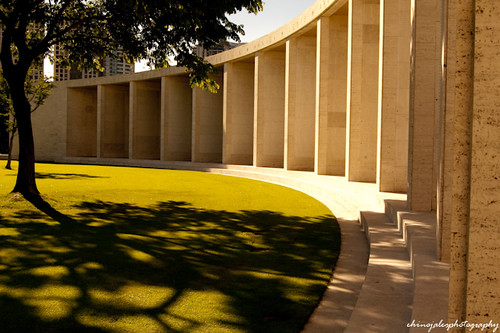 OppositesShot at the Manila American Cemetery. The brownish smooth hardness of the limestone tablets against the dark, disordered patterns of the tree's foliage. Order and disorder. Life. Gone, and the living. 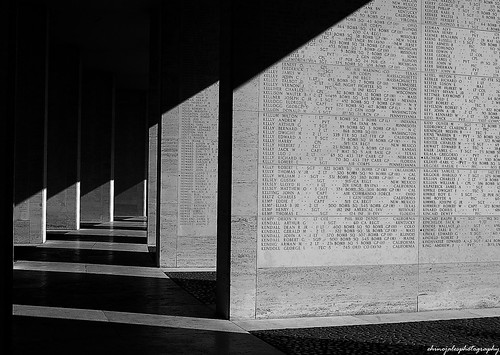 Wall of the Missing. Continuing with the B&W project. Shot at the Manila American Cemetery in Fort Bonifacio, Taguig City. As the sun gently sinks, the shadows slowly draws across the names of the missing valiant - exactly 36,286 American and Filipino servicemen are recorded in these limestone tablets.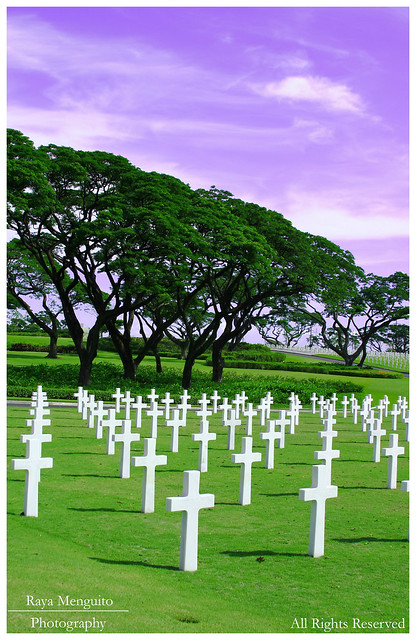 Manila American Cemetery and MemorialManila American Cemetery and Memorial is located in Fort Bonifacio, Taguig City in Metro Manila, Philippines. Manila American Cemetery and Memorial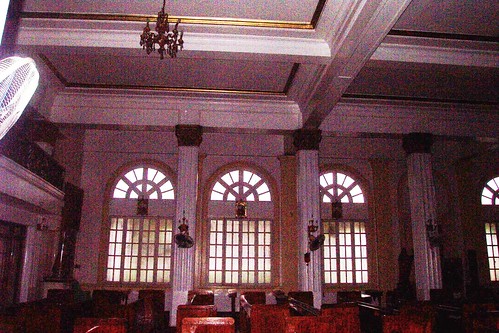 Nave Chapel of Our Lady of the Miraculous Medal, Philippine Women's University, Manila, Philippines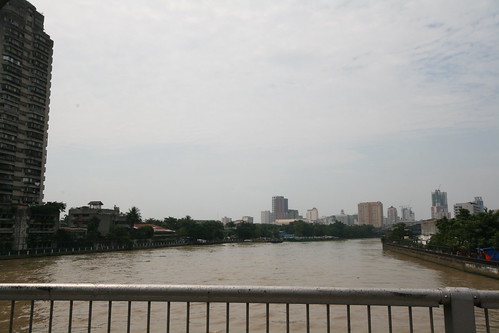 Pasig River viewed from old Ayala Bridge  Puerta de Isabel Gate through the old Spanish Wall, Intramuros, Manila Puerta Postigo del Palacio Gate, Intramuros, Manila, Philippines 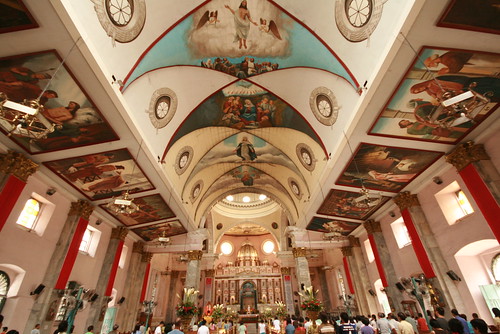 The awesome interior of old Binondo Church ( Basilica of San Lorenzo Ruiz ) .... the patroness of this historic Dominican Church is the Nuestra Senora Del Rosario . 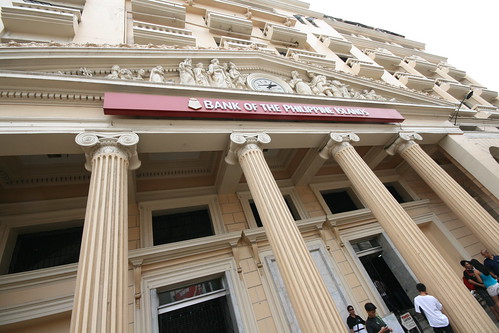 In College, I worked in this building with an export import company. |  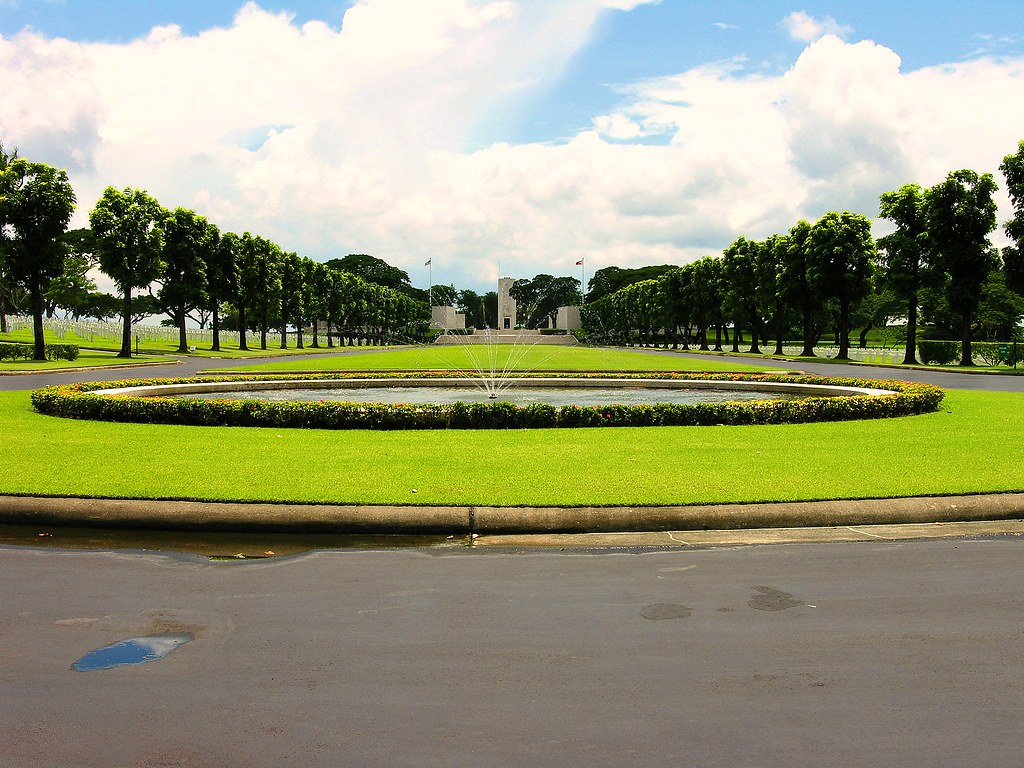 The cemetery, 152 acres (62 ha) or 615,000 square metres in area, is located on a prominent plateau, visible at a distance from the east, south and west. With a total of 17,206 graves, it is the largest cemetery in the Pacific for U.S. personnel killed during World War II, and also holds war dead from the Philippines and other allied nations. Many of the personnel whose remains are interred or represented were killed in New Guinea, or during the Battle of the Philippines (1941-42) or the Allied recapture of the islands. The headstones are made of marble which are aligned in eleven plots forming a generally circular pattern, set among masses of a wide variety of tropical trees and shrubbery. PROPERTY IN FRANCE FOR SALE (2009 sq. feet habitable space, 3 BED 3 Bath, Living Rm, Family Rm CAN BE 2nd kitchen, Dinning Rm, or hobby/with tools rm, or Chapel altar at both ends, depending aragment of furniture, Dressing Rm, Detached Garage Across the street, median park, 3 Cellar Dungeons, huge attic can be converted as a big conservatoryboth not included as habitable space FOR $200,000) IN SEPARATED FROM KITCHEN BY A WALL THE SAME WITH LIVING RM. Renovattion of the house cost more than $ 120,000 ie. new roof $25,000, Brick Floors in family room $36,000 , reinforoced dumgeons and new wood in living floor, arch dungeons floor and spiral stairs $23,000, Finishing up like double pane windows, doors, utilities, $37,000, landscaping concrete work, $12,000 etc. Then antique furnitures, linen included. Living area of 2009 sq. feet, 3 bath and 3 bdr. Click here to see the full album of the house FROM A MEDIEVAL HOME


|
| Sagada, Mt. Province ABOVE MY TOURS OF WESTERN AND EASTERN EUROPE: As a child, I dreamt about traveling around the world especially in Europe and living there for for some months abd acquring their culture and language, I would need a house or a home base equidistant to the capitals of Europe. This dream was fulfilled later on above, in my retired years. However, I am done with traveling and will sell this house for a measely sum of $_00,000 together with the antique fornitures, see Inside the house 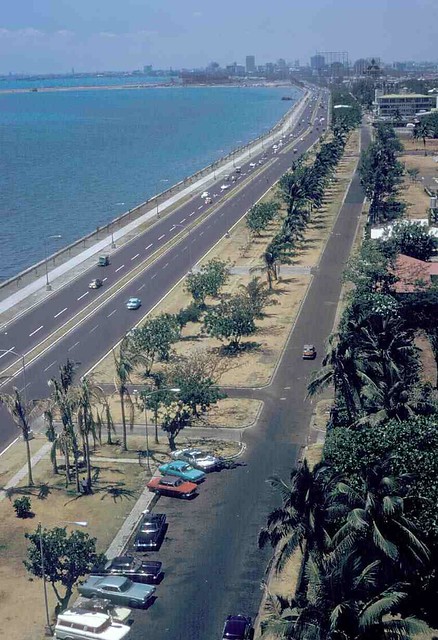 Pasay City, Roxas Blvd. at Aristocrat (Barbecue Plaza)
|
Rizal Hall, University of the Philippines intramuros, manila cathedral The natives and Chinese were not permitted to live inside the walled fortress and were resigned to live outside the great walls of Intramuros. Intramuros was designed with 51 blocks within the vast walls, the only access in or out of Intramuros was via seven fortified gates. A moat around the walled city was added in 1603. Spread throughout the 51 blocks of the city were 12 churches, hospitals, domestic accommodation, military barracks, Governors Palace and schools.  My Church in the town of my birth:Tanay, Built in 1778, the church was named after the Archbishop Ildefonso of Toledo, Spain, who was consecrated during the year 657 AD; revered for his spiritual vitality and deep writings contained in “ The Book of the Virginity of Maria”. Behind the heavy stone edifice decorated with Hispanic, archetype windows and stone sculpture of its saint, are legends that found its way to this generation. Tradition has it that an image of the Lady of the Immaculate Conception, was found among the belongings of our fleeing forefathers on the onset of the Spanish Invasion in 1573; the same image found among the remnants from the fire that gutted the first church in 1620- a lone survivor! During the Chinese Uprising in 1639, Father Geronimo de Frias hid it in the fields but was later on found by the Chinese rebel who tried to destroy the image, instead to themselves befell violent death. Cross at Bukal, in Tanay This was always sang to me by my grandmother. Presented in this video are the vintage photographs of the following colonial and historical religious edifices: 1. La Loma Church - formerly Caloocan, now Manila 2. Sto Domingo Church- Intramuros (destroyed by the Americans during world war II) 3. Paco Catholic Cemetery - Paco 4. Tondo Church -Tondo 5. San Sebastian Church -Manila 6. Binondo Church - Binondo 7. San Juan Church - San Juan 8. Sta. Cruz Church - Manila 9. Manila Cathedral - Intramuros 10. Poong Nazareno Church - Quiapo Television was introduced in the Philippines in 1953 with the opening of DZAQ-TV Channel 3 of Alto Broadcasting System in Manila. The station was owned by Antonio Quirino, the brother of the incumbent Philippine president, who was set to run for re-election the following year. The station operated on a four hour-a-day schedule (6 - 10 p.m.) and telecast only over a 50-mile radius. This television station was later bought by the Chronicle Broadcasting Network which started operating radio stations in 1956. CBN was owned by the Lopezes who were into various business concerns. The acquisition signalled the birth of ABS-CBN Broadcasting Network, now considered one of the major broadcasting companies not only in the Philippines but also in Asia. The Lopezes also owned The Manila Chronicle, a leading daily at that time. ABS-CBN therefore became not only the first radio-TV network in the Philippines but also the first cross-media entity owned by a family --- a situation which remains until today. Subsequently, the Lopez group added a second station, DZXL-TV 9. By 1960, a third station was in operation, DZBB-TV Channel 7 or Republic Broadcasting System, owned by Bob Stewart, a long-time American resident in the Philippines , who also started with radio in 1950. The first provincial television stations were established in 1968 in Cebu, Bacolod, and Dagupan by ABS-CBN. The network is supplemented by 20 radio stations located nationwide. Economic constraints during these early years of television forced a dependence on imported programs from three U.S. networks – ABC, CBS, and NBC. Importing programs was cheaper than producing them locally. In addition, canned programs appeared to be more popular among local audiences, even though initiatives were made in educational programming. Philippine television's early dependence on US programs may be partly responsible for "colonial mentality" that has continued to afflict Filipinos during the past several generations. The commercial orientation of TV also engendered a "that’s entertainment" mentality in both the advertisers and the general public. 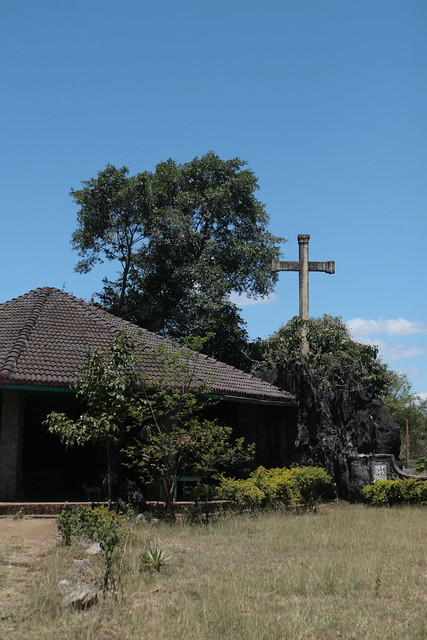 
|
 Sarmiento Bldg, Makati, where I worked at Procter & Gamble;  ARISTOCRAT. The closest restaurant to our place at MNS. 432 San Andres St. cor. Roxas Blvd., Malate |   Top, movie houses, City Hall, Right Photo Bagiuo, the terraces and the Lost highway bontoc-mainit (mountain province). A mountain trail in the Cordillera, Philippines. Rizal Avenue the street was named after Rizal, it was referred to as Calle Dulumbayan. I watched movies at the Ideal, State, Dalisay and Avenue Theaters. Later on ... the Universal Theater and Odeon and Galaxy. And Scala, Apollo, Alegria and Opera House.  |
As between daylight and dark ghost-like the landscape My heart goes back to wander there,
And among the dreams of the days that were,
I find my lost youth again.
And the strange and beautiful song,
"A boy's will is the wind's will,
And the thoughts of youth are long, long thoughts."
I should not be withheld but that some day
into their vastness I should steal away,
Fearless of ever finding open land,
or highway where the slow wheel pours the sand...RF







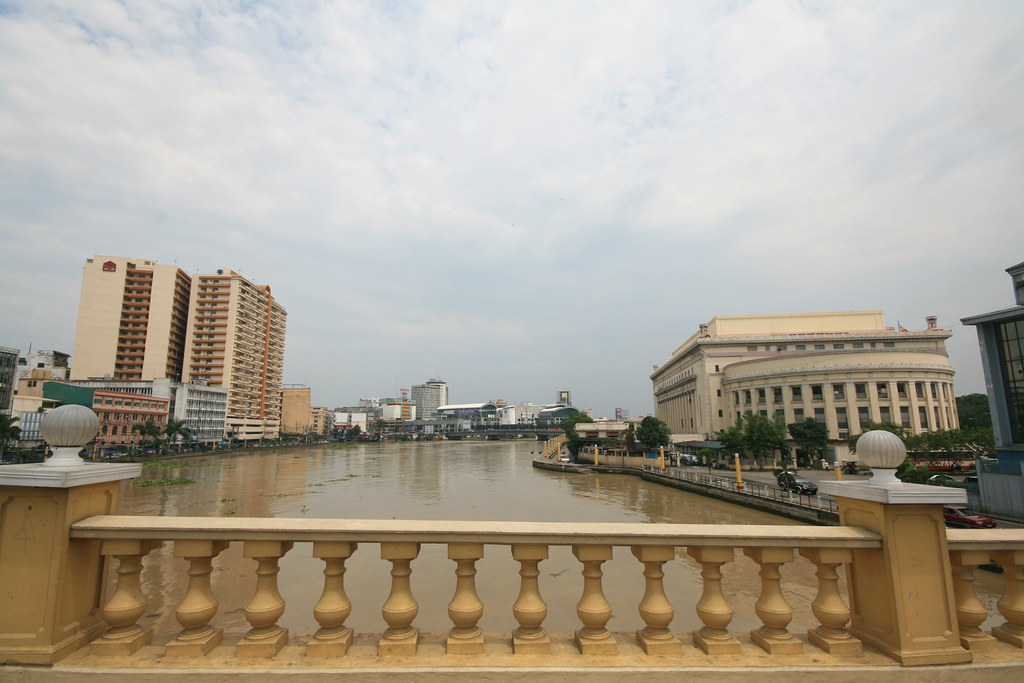

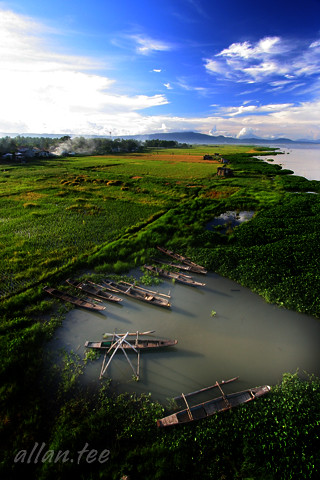



















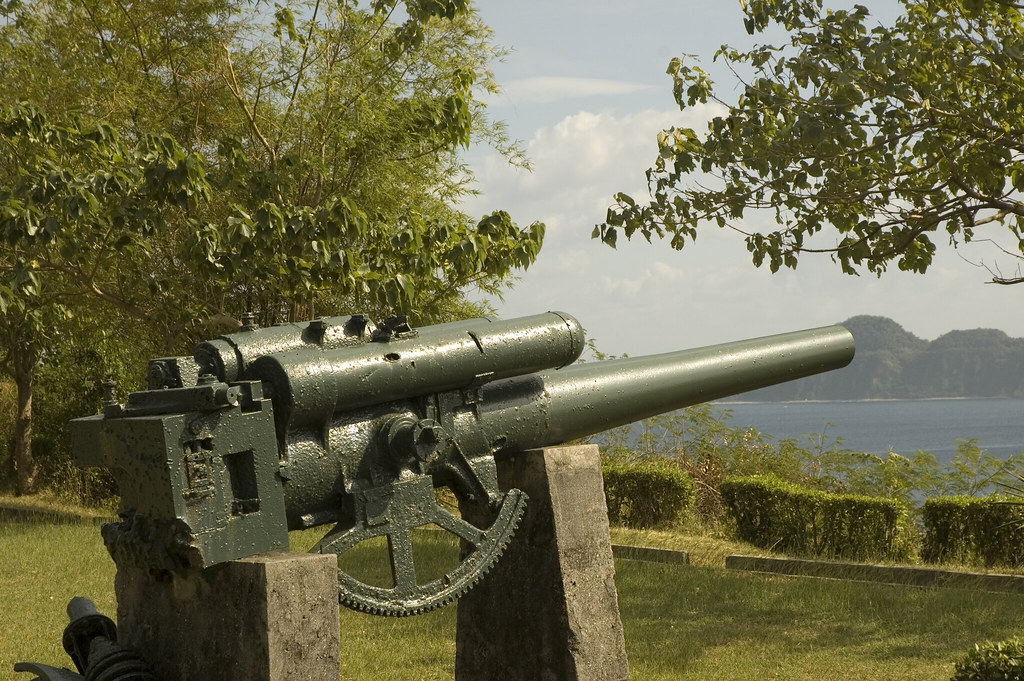








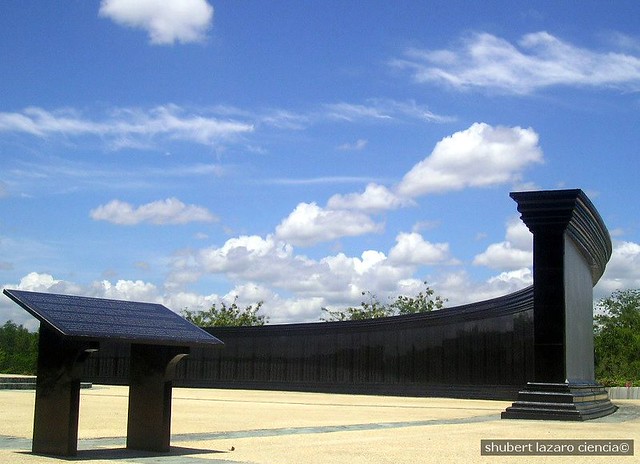





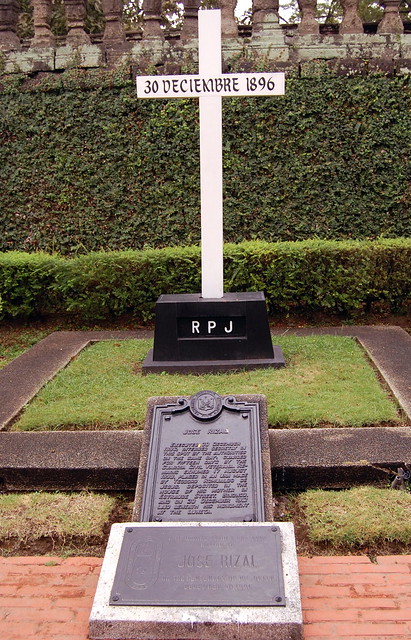
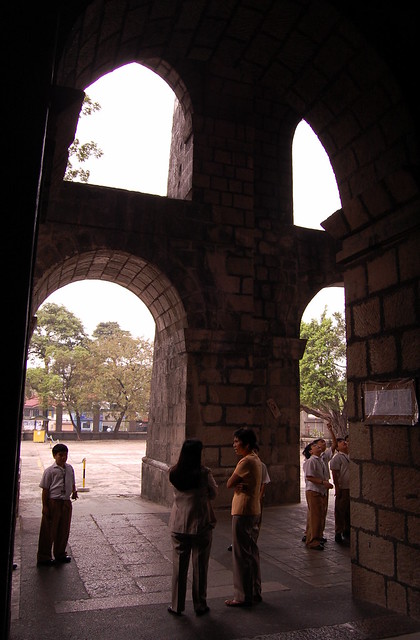
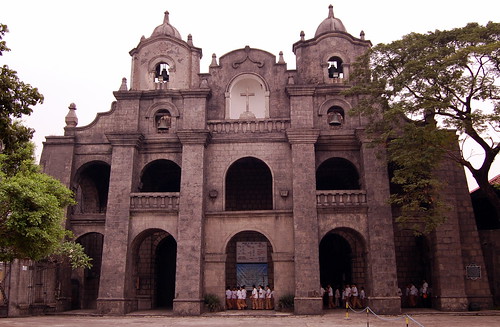

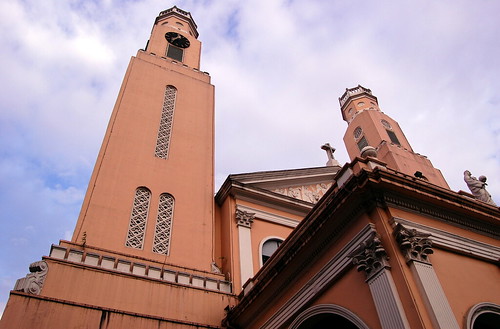
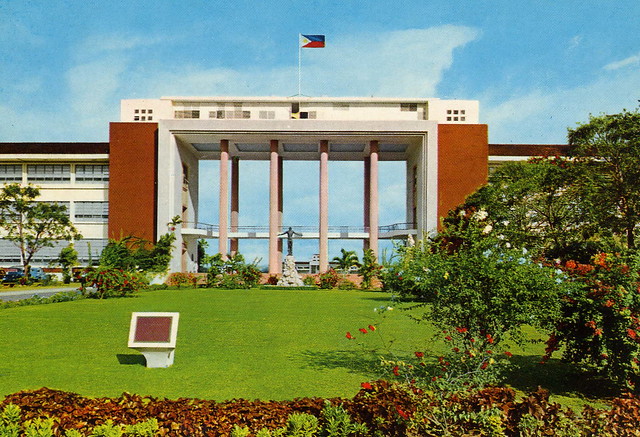
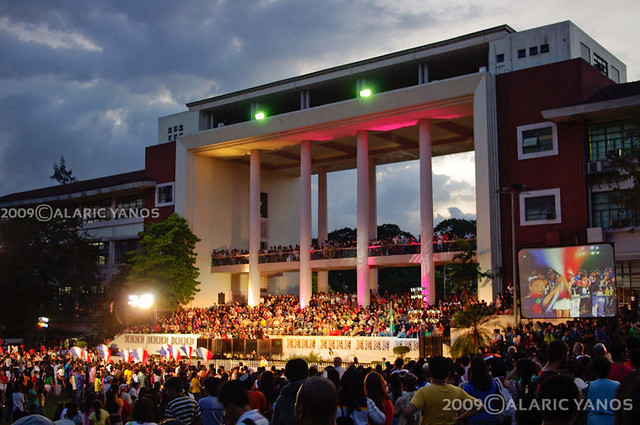




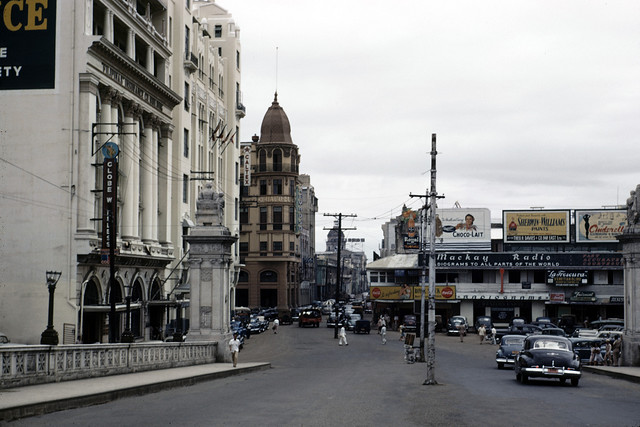



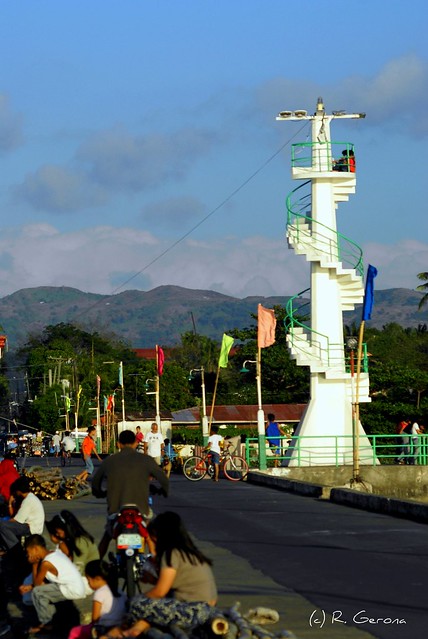





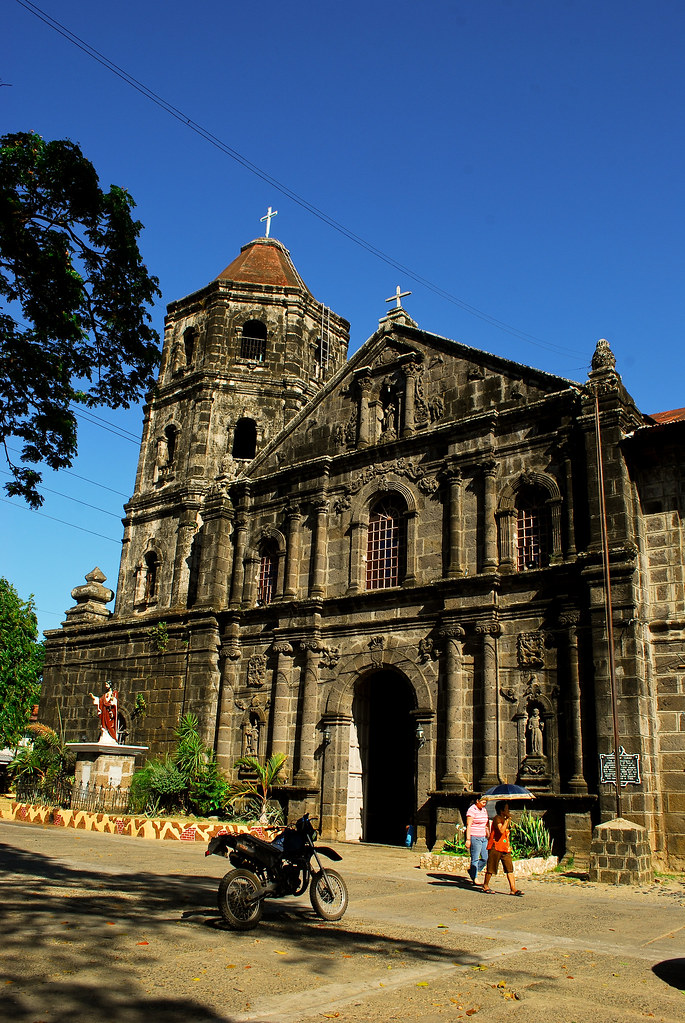




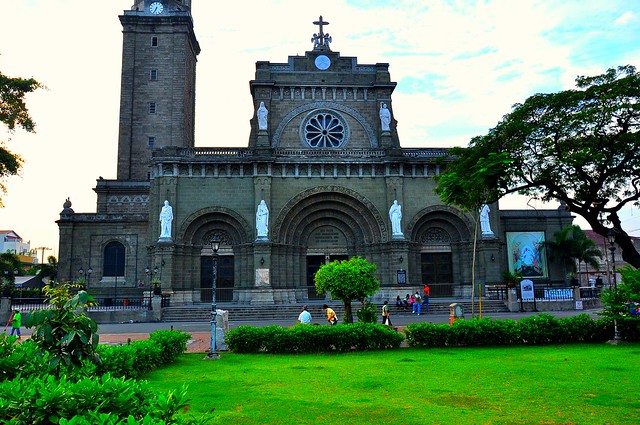






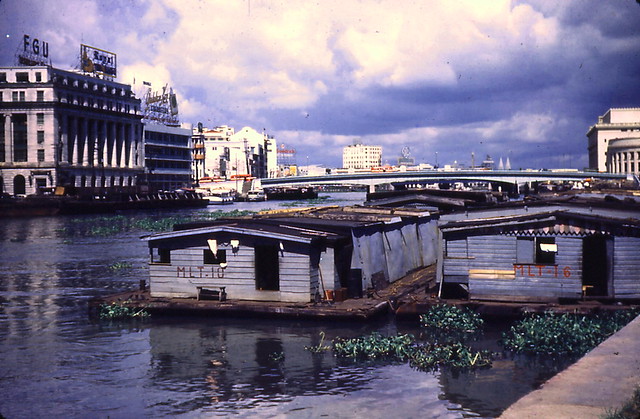



















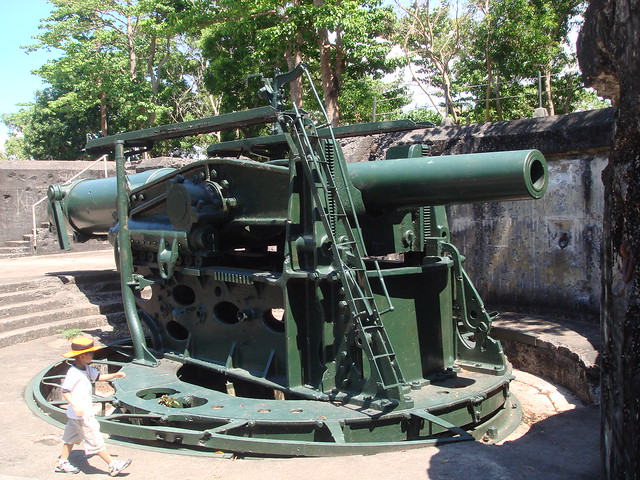
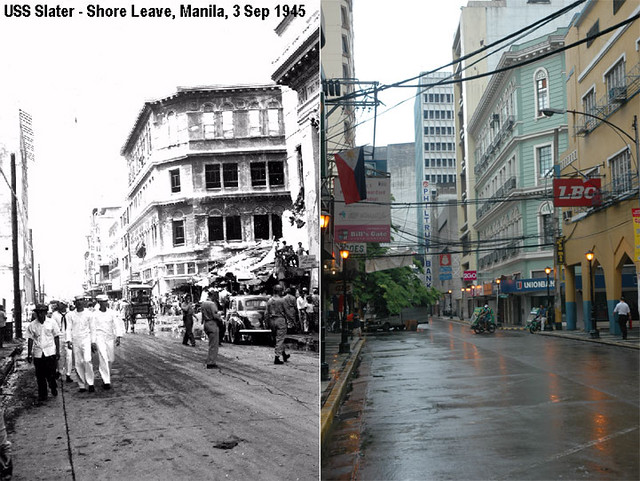























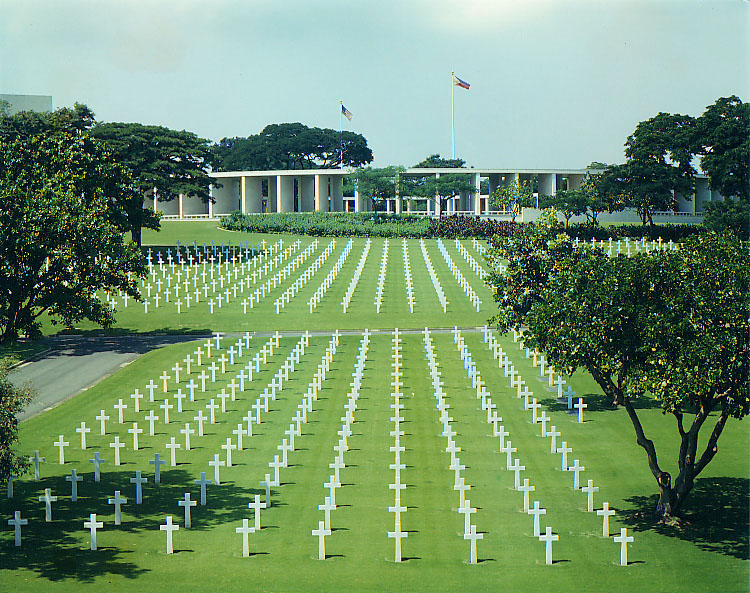




.gif)


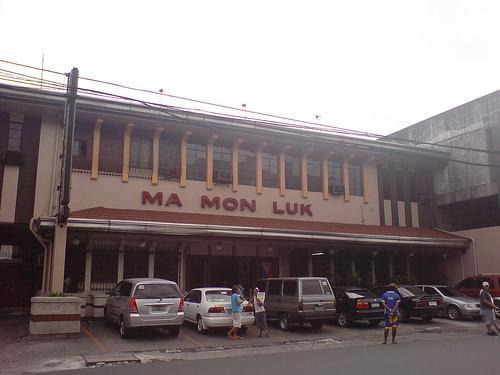
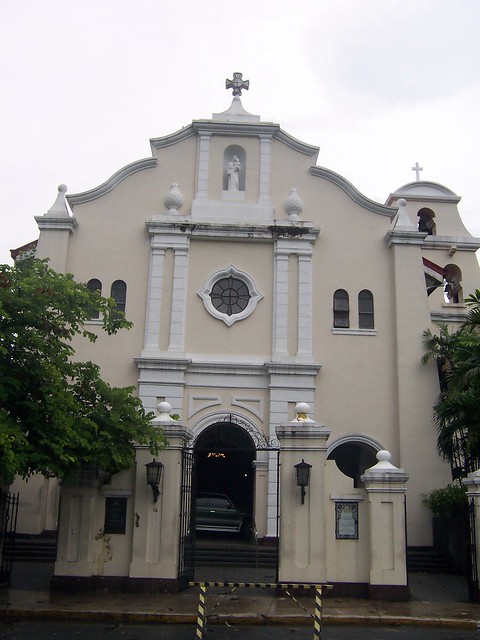
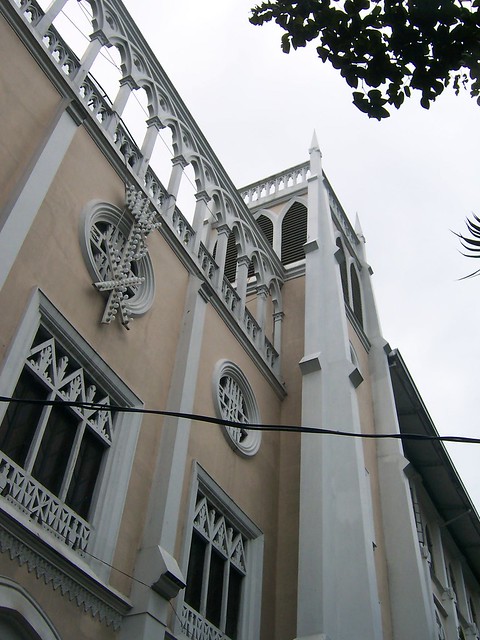
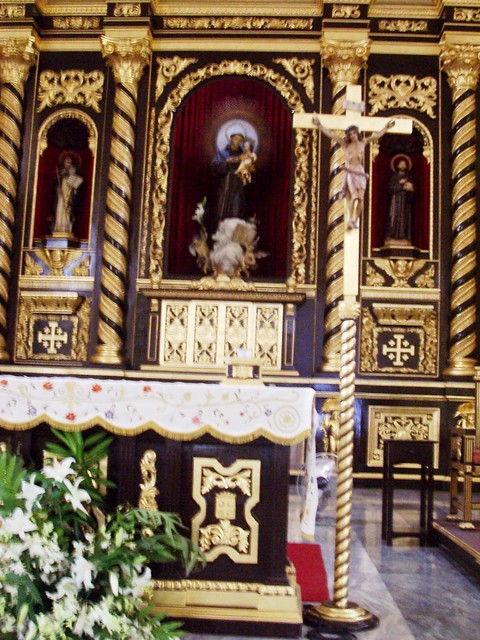


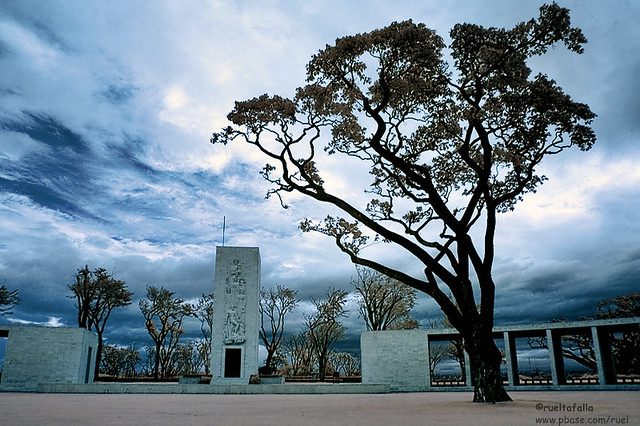

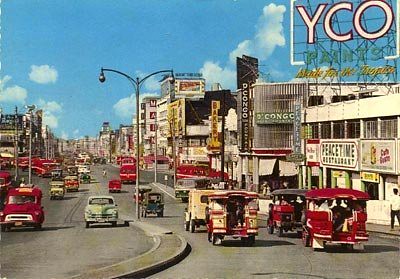


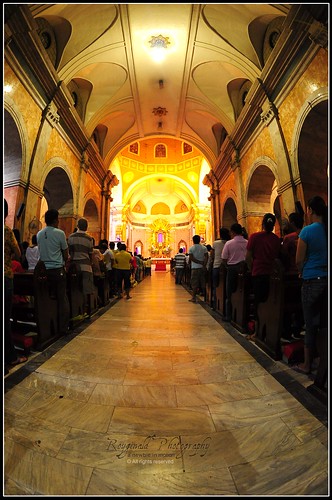









.JPG)
.JPG)

.JPG)
.JPG)
.JPG)
.JPG)
.JPG)
.JPG)


























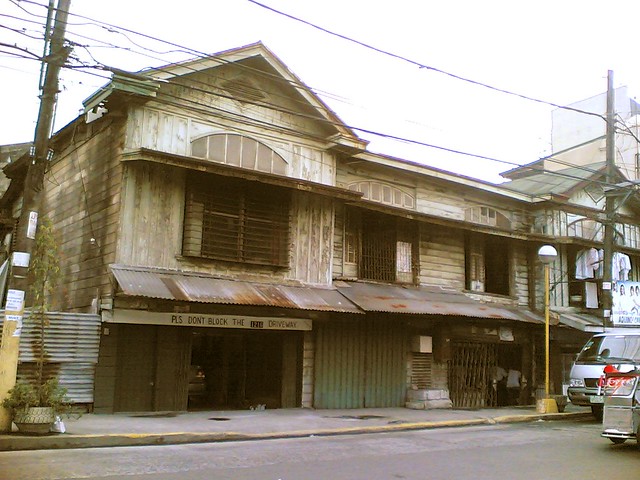
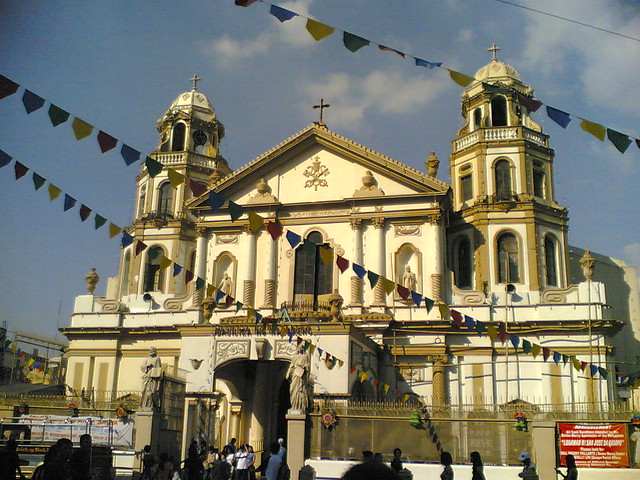
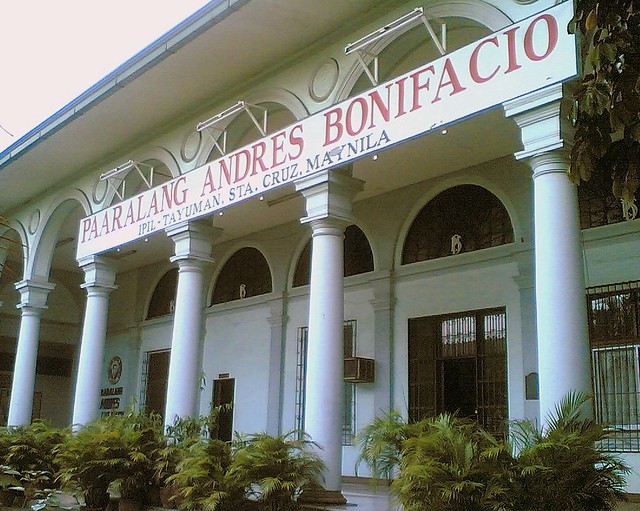














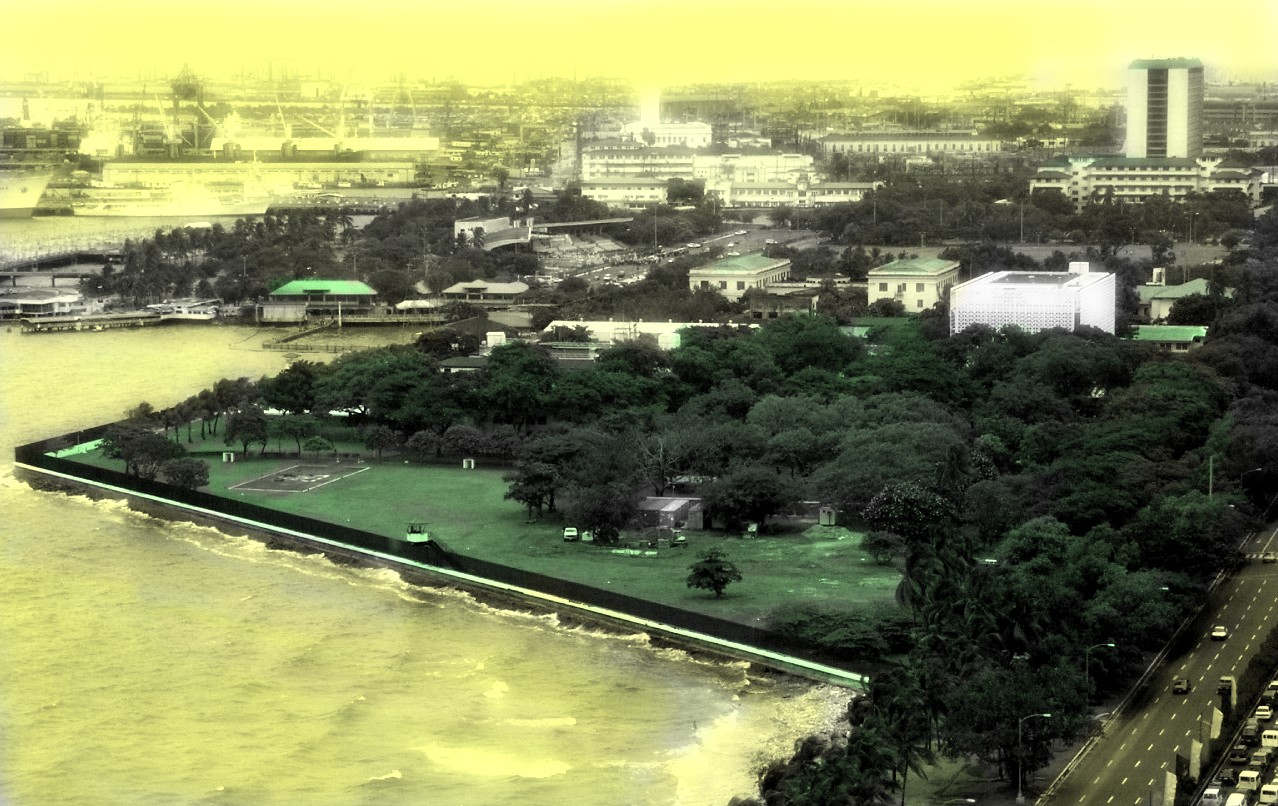



No comments:
Post a Comment